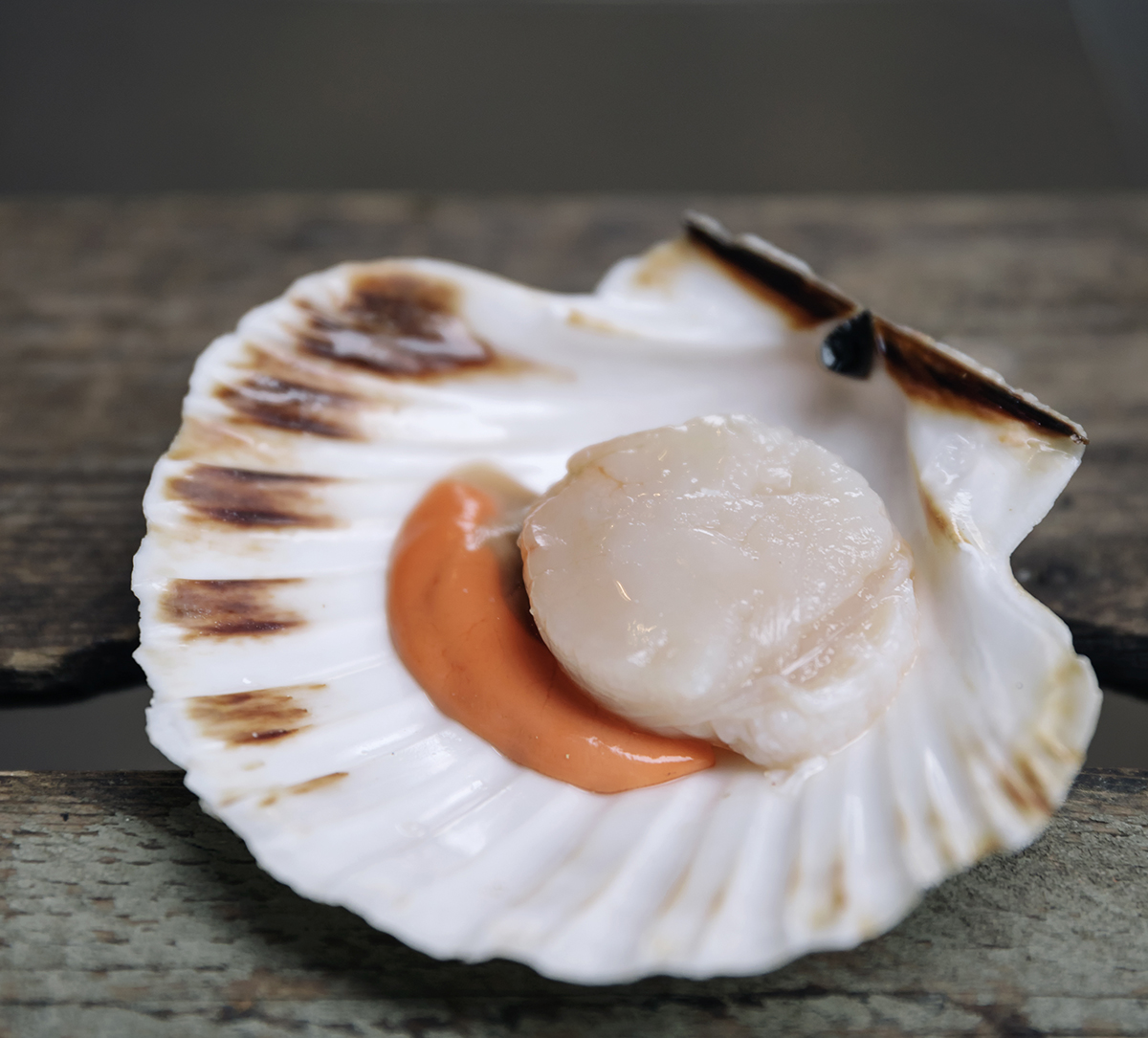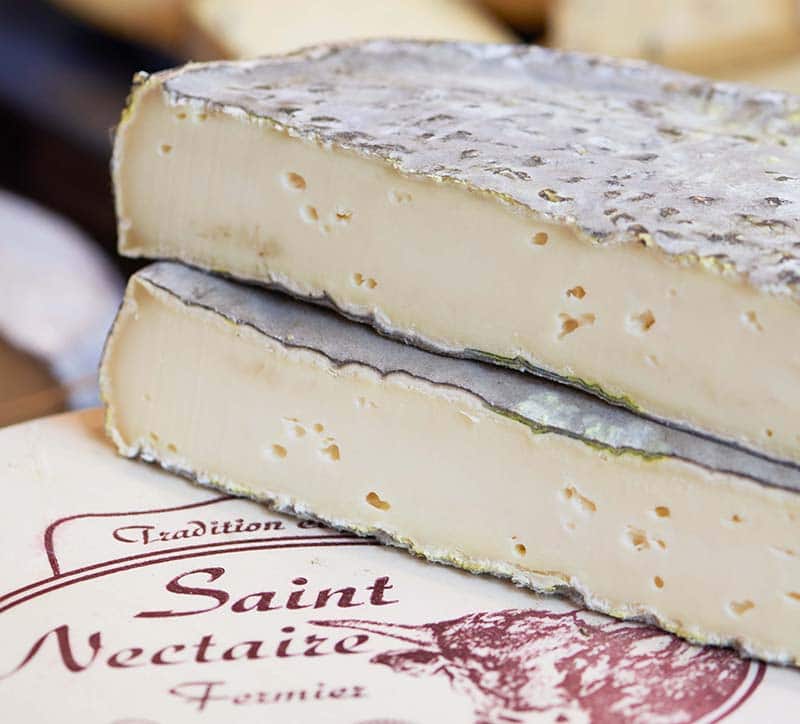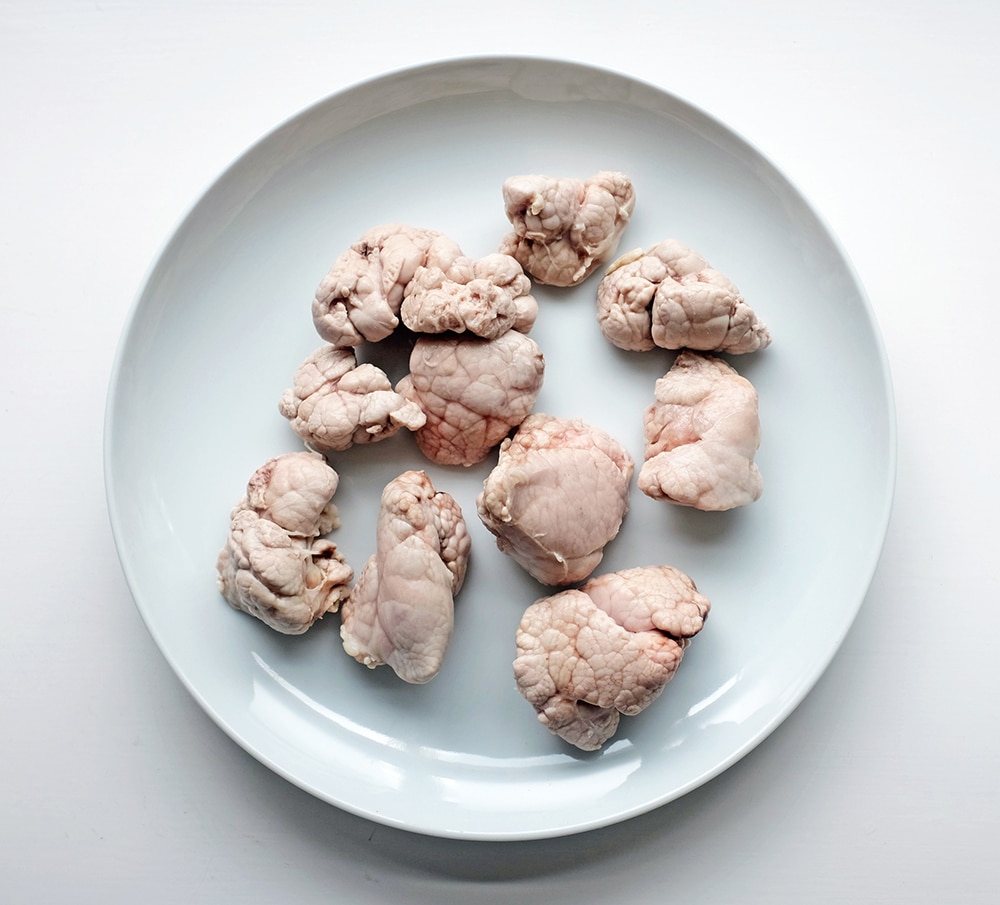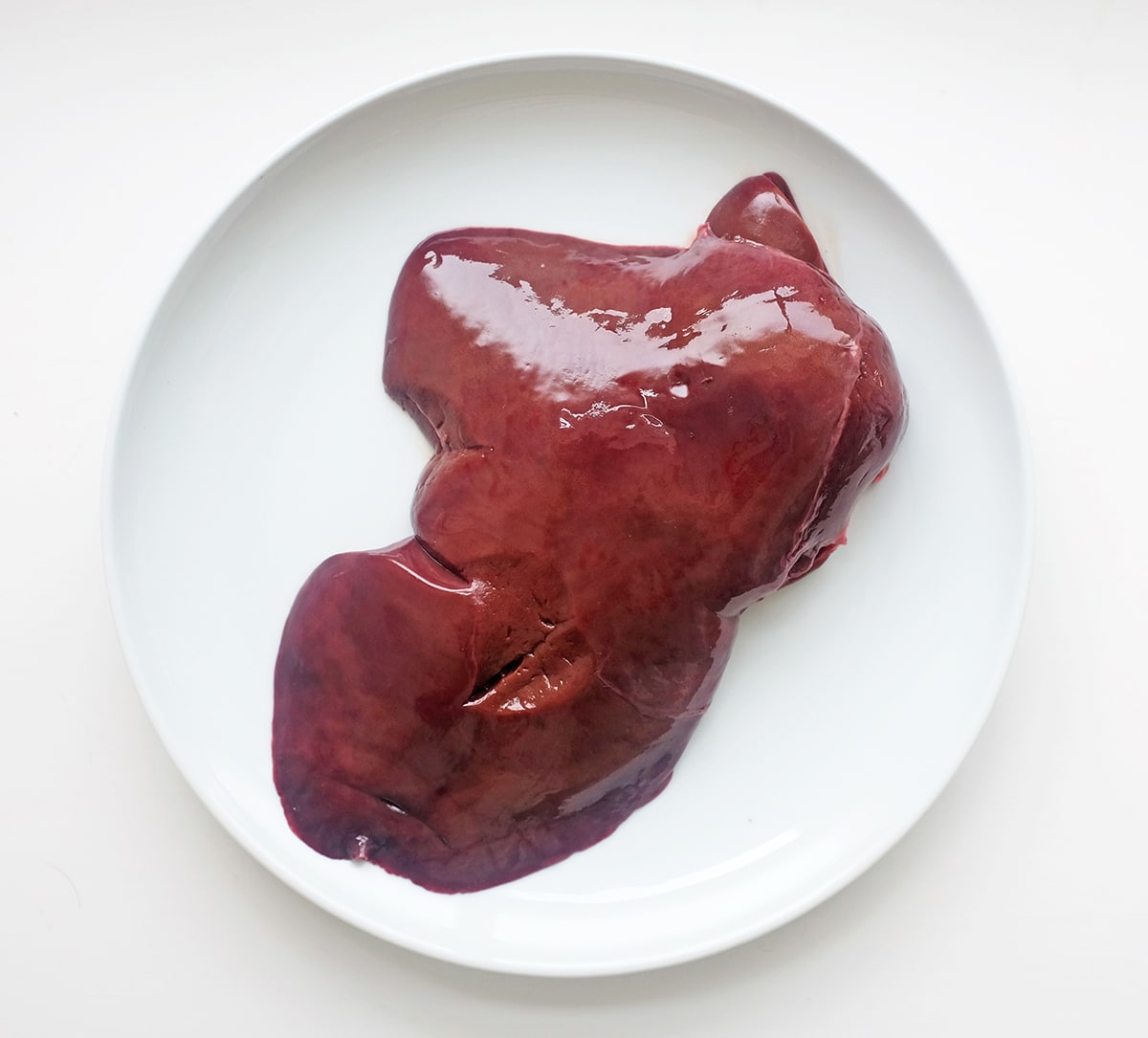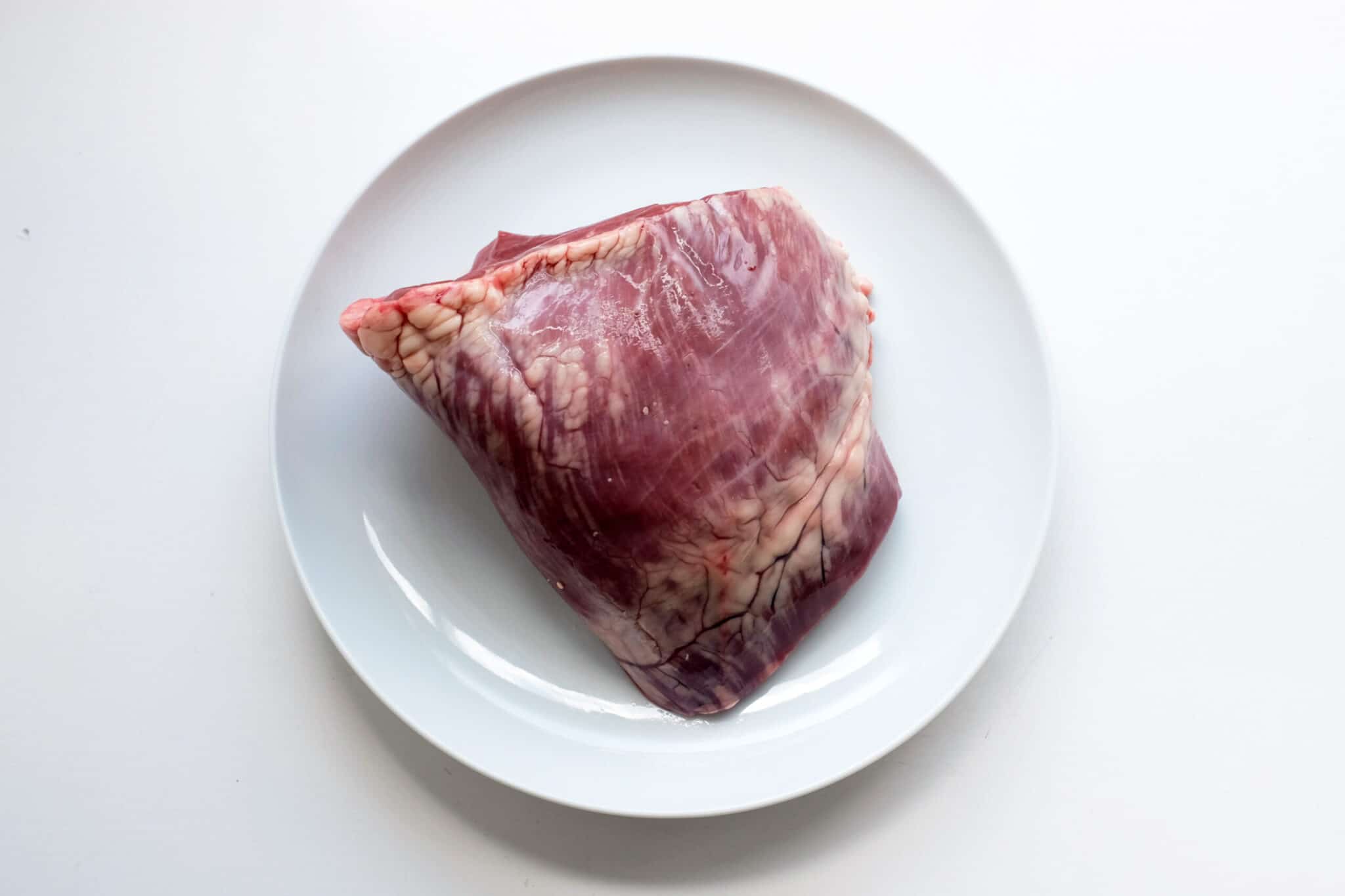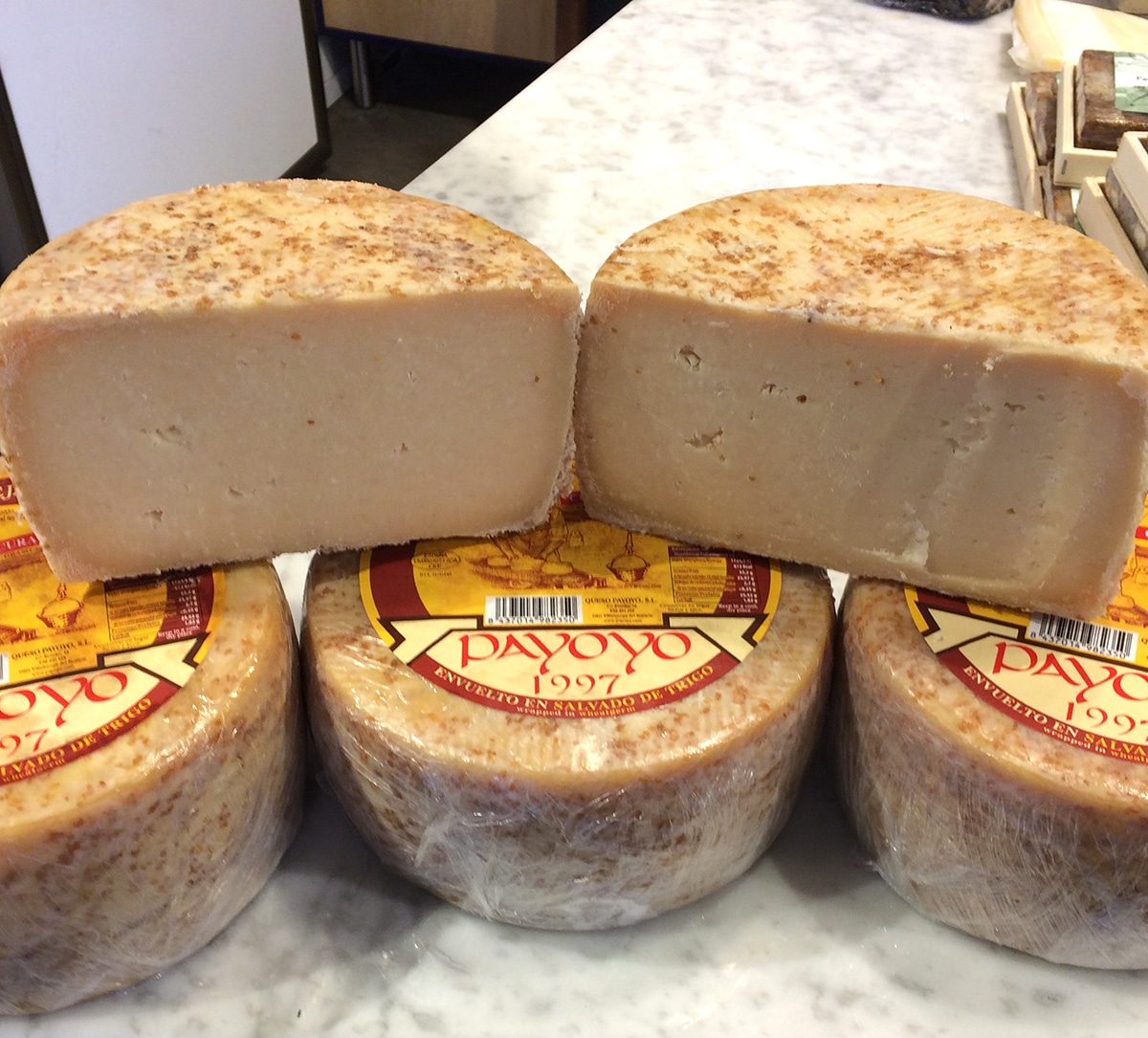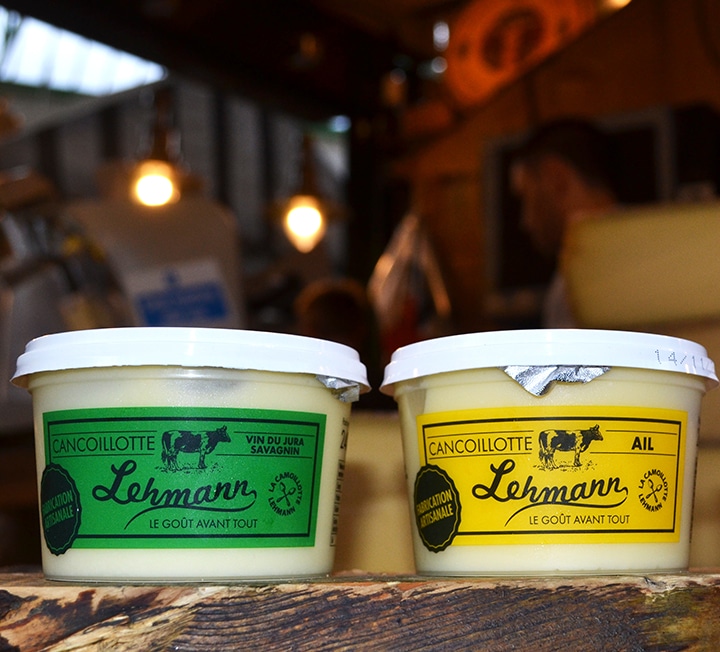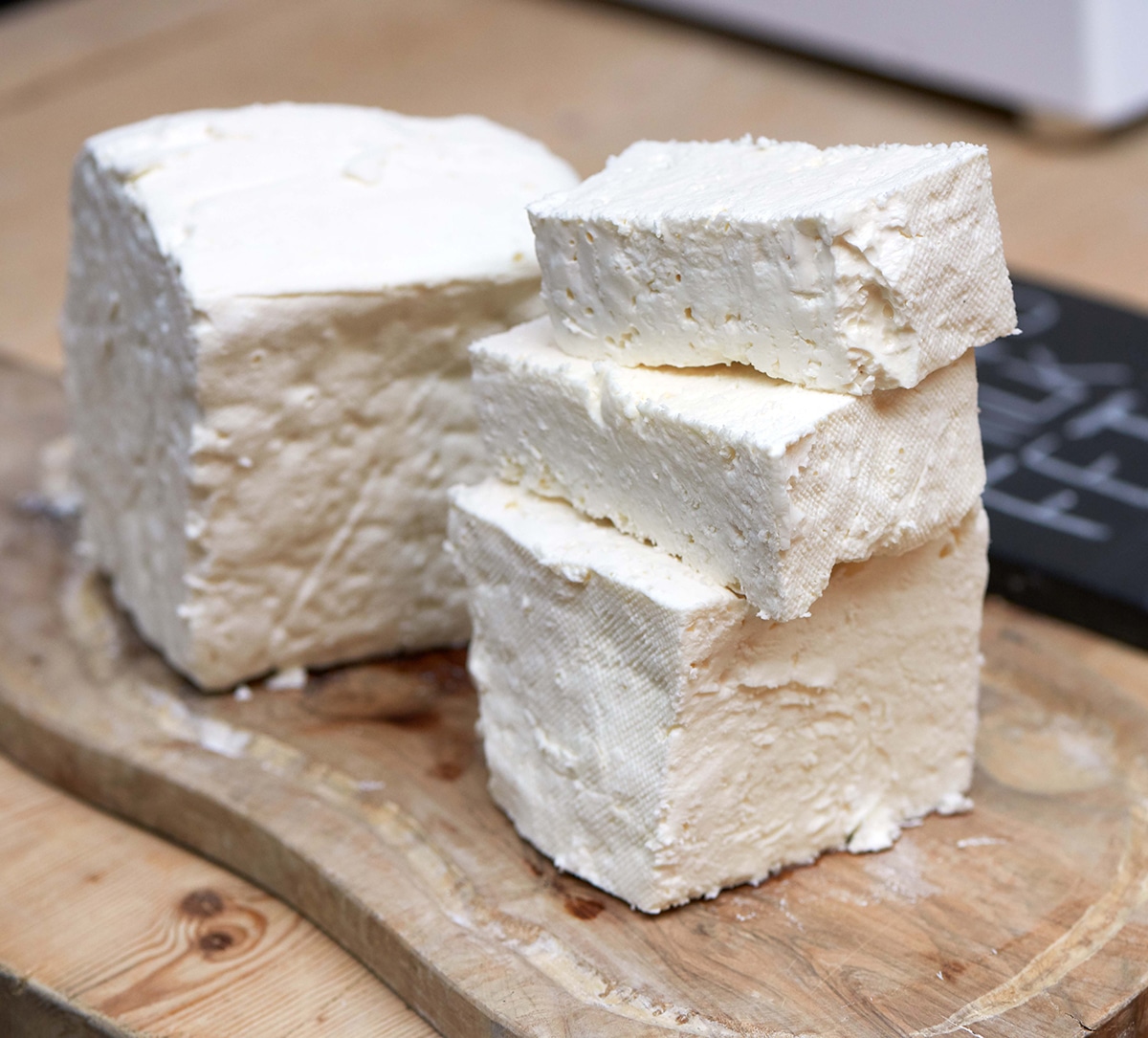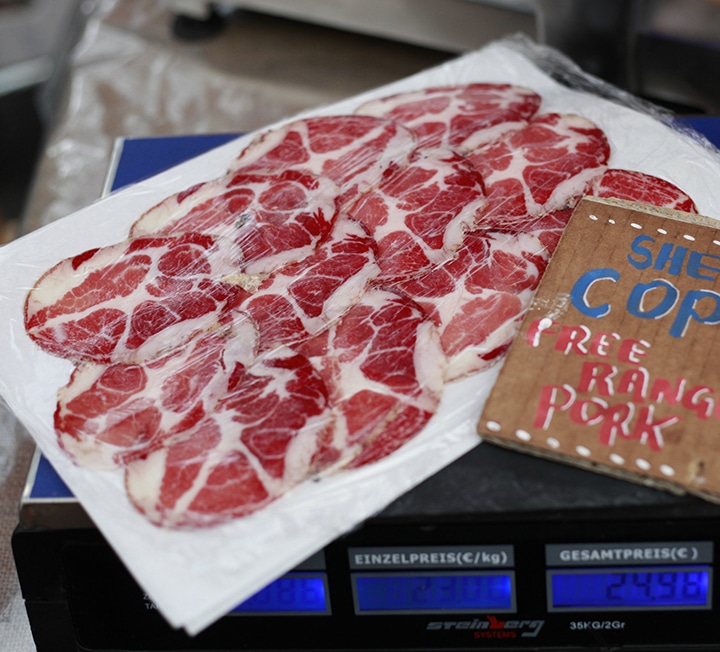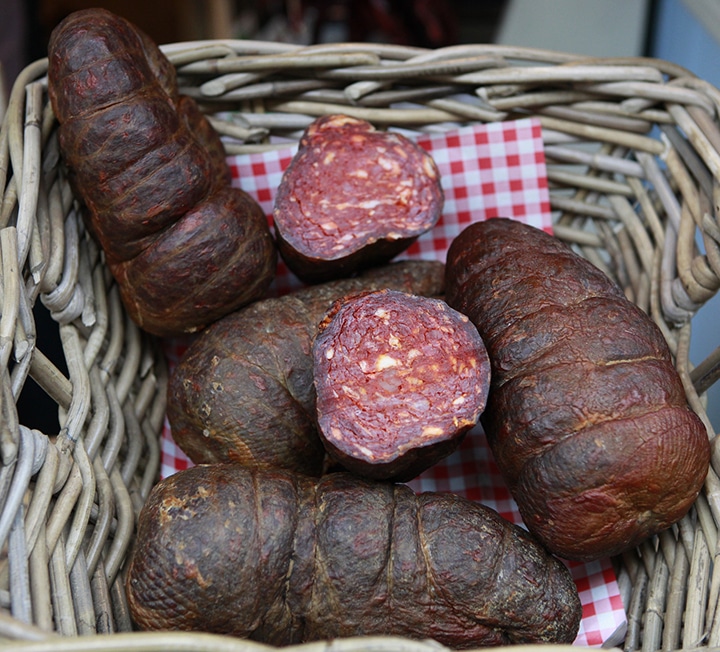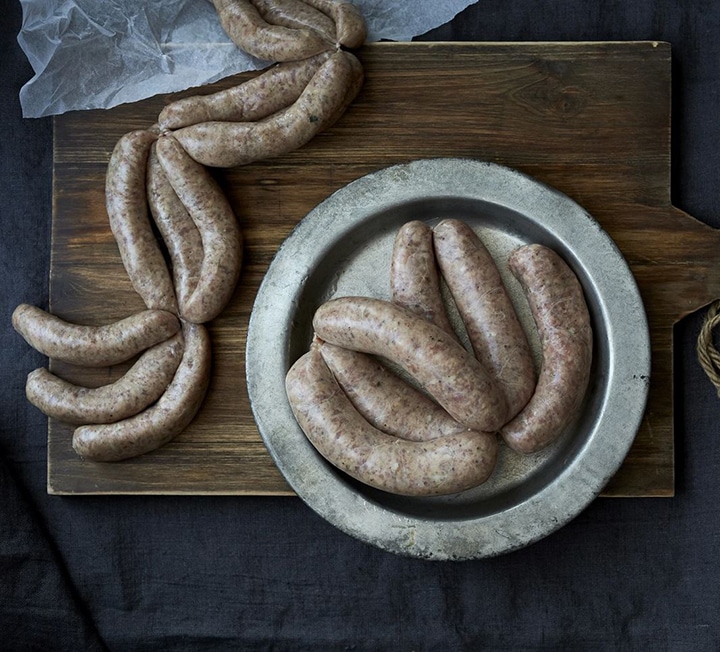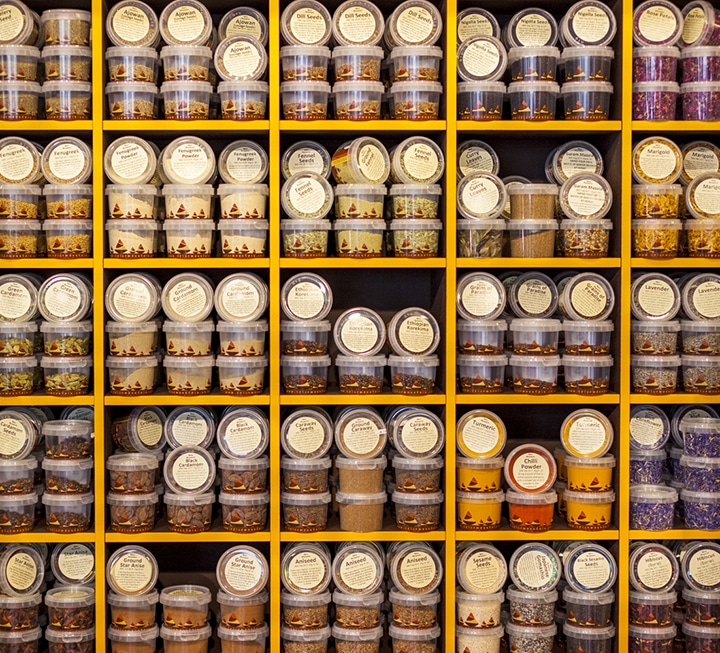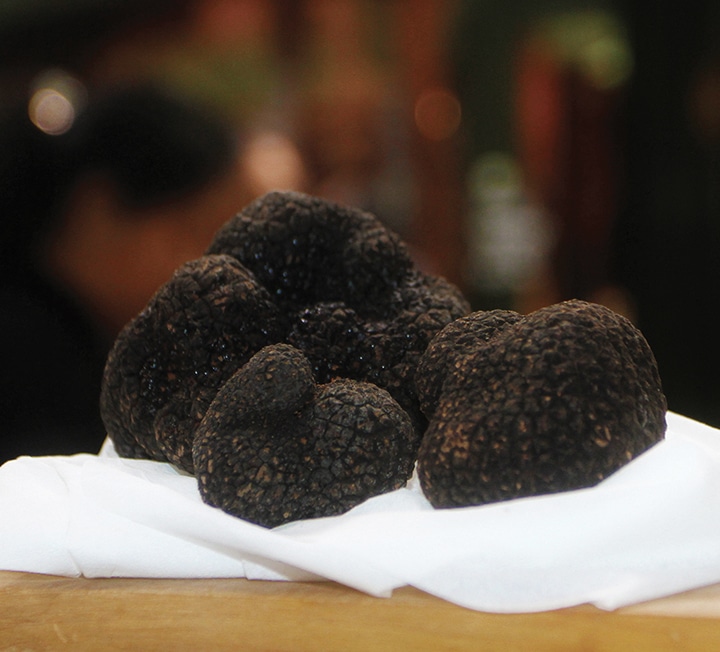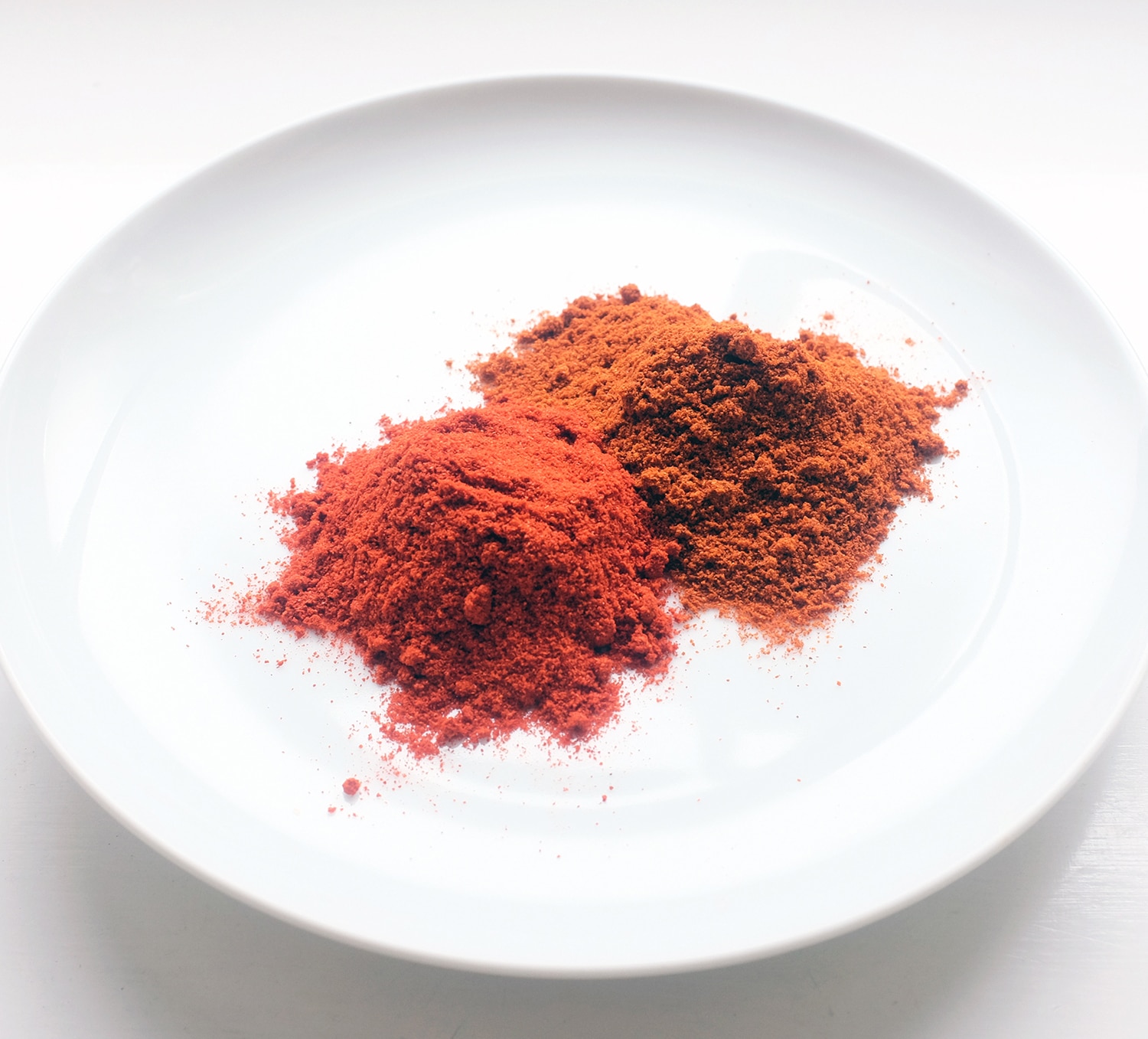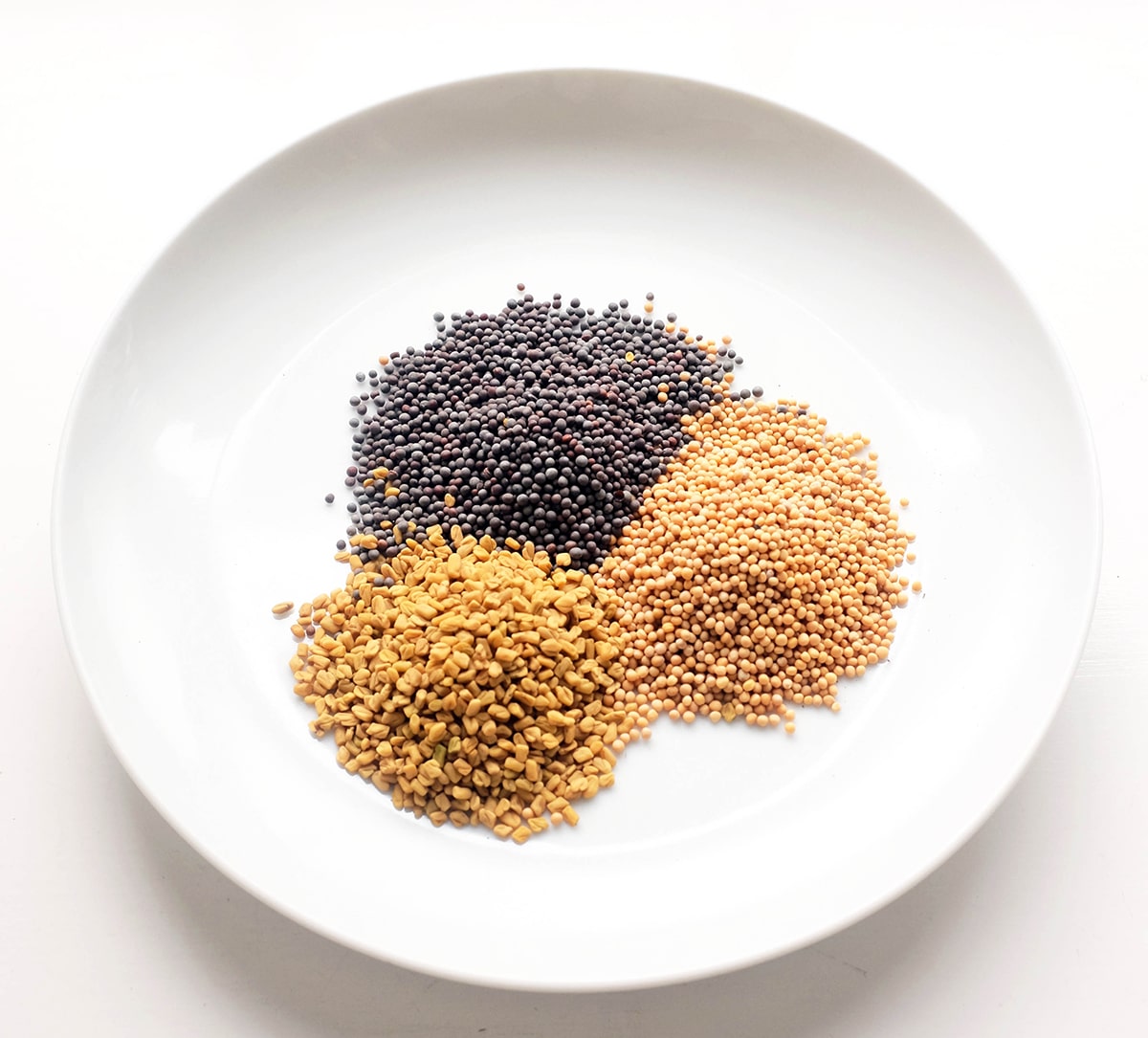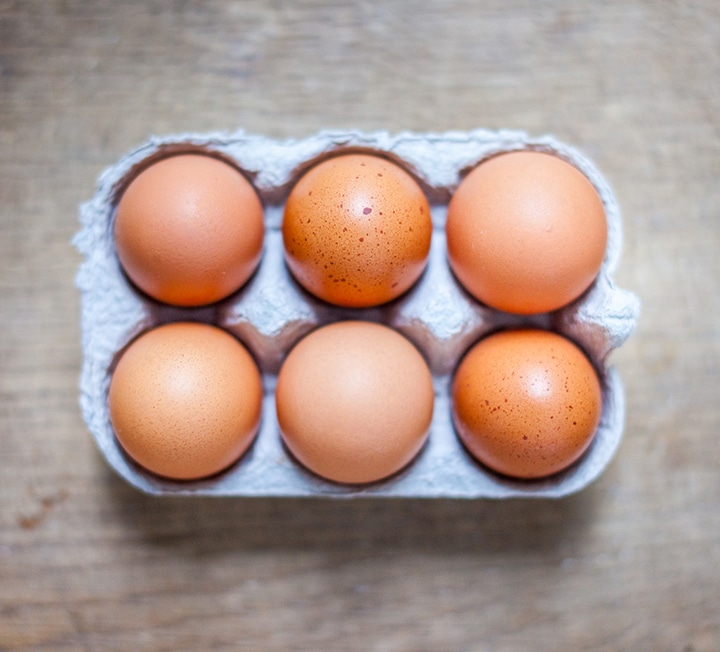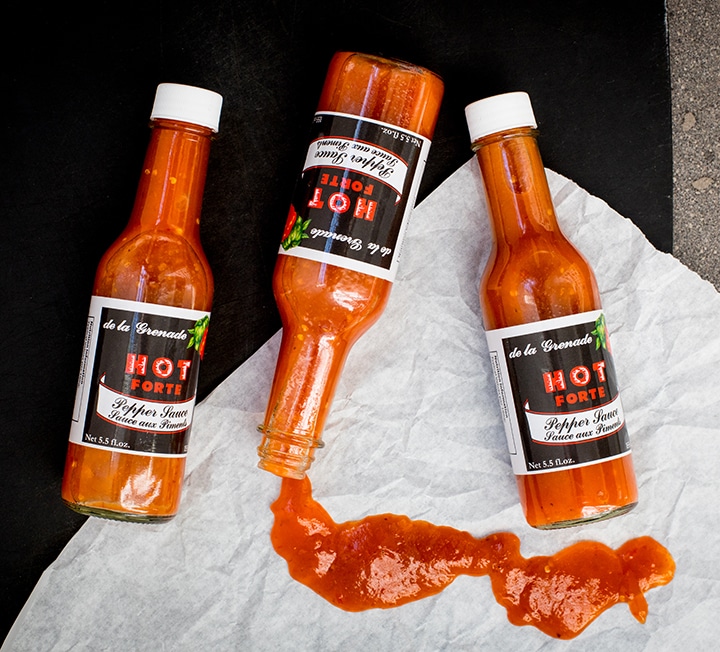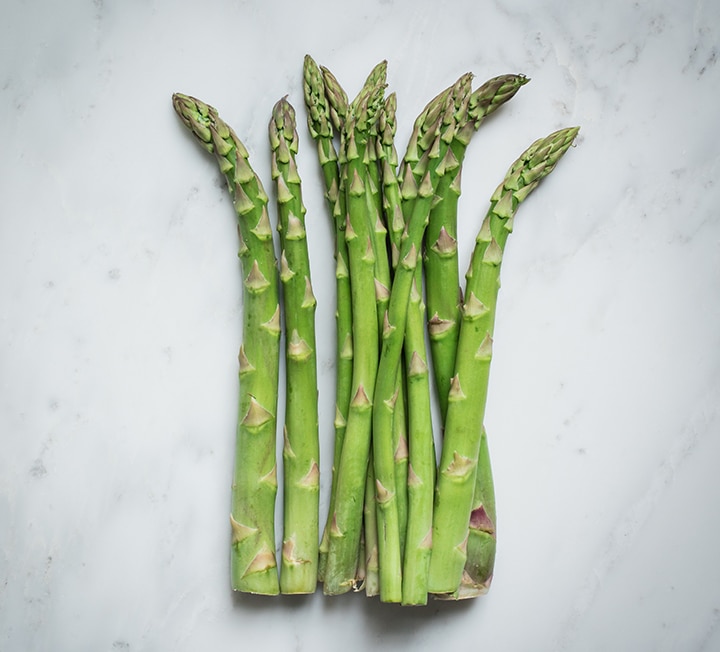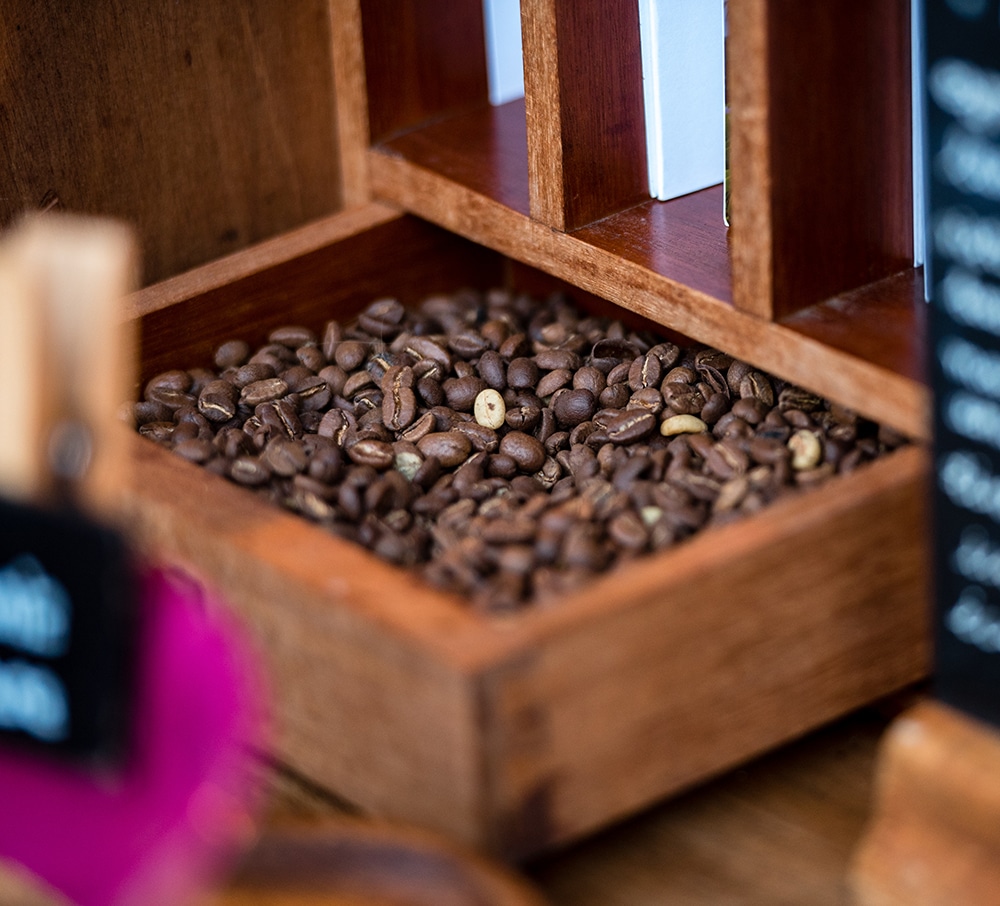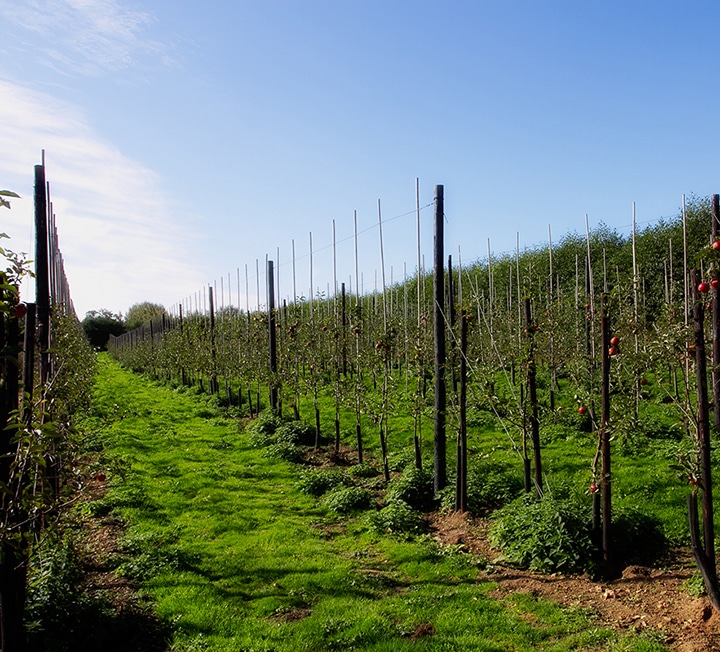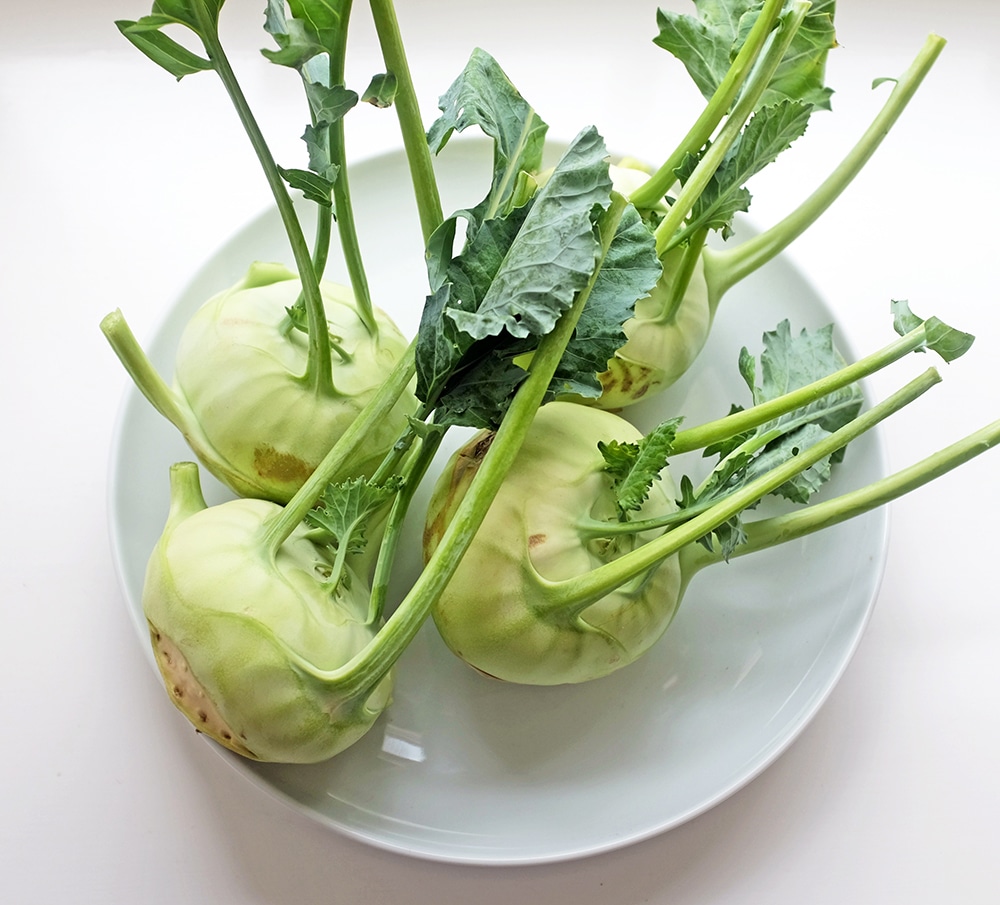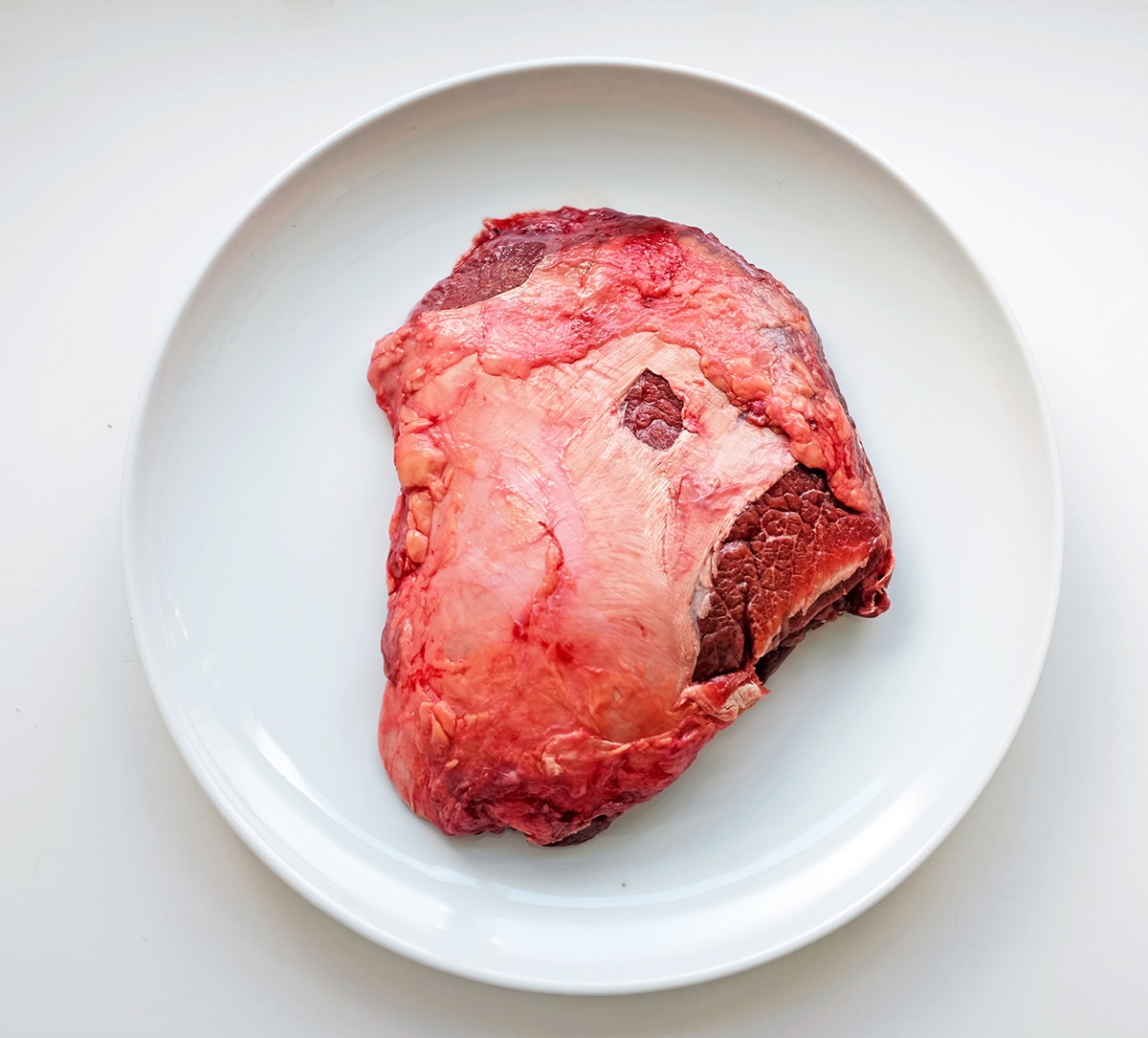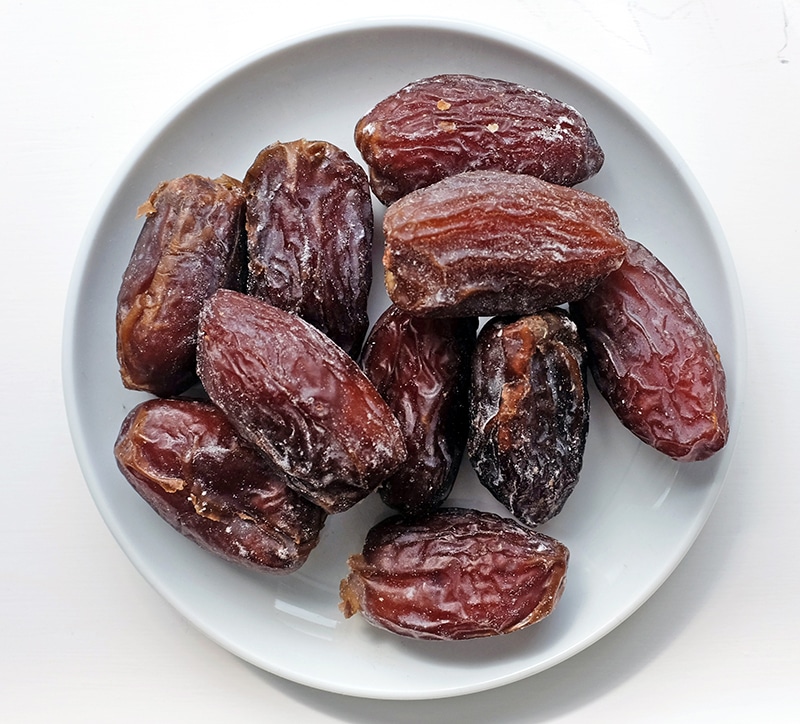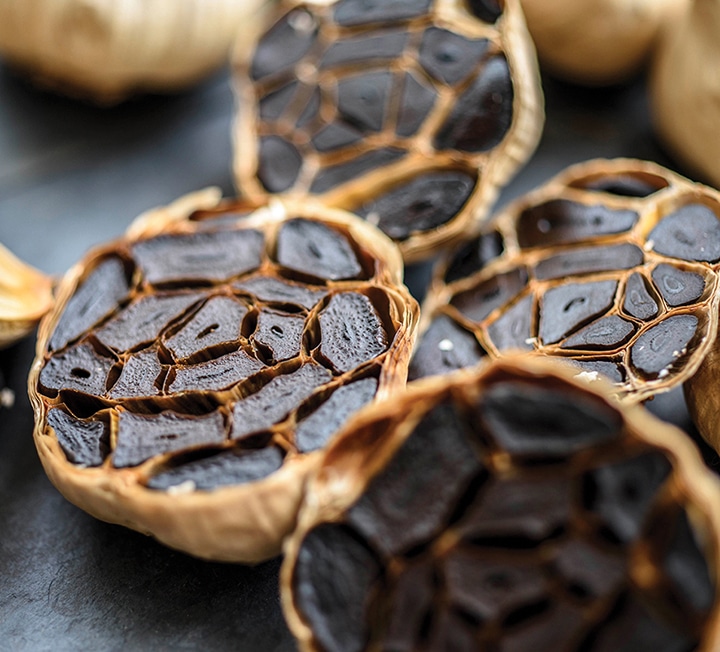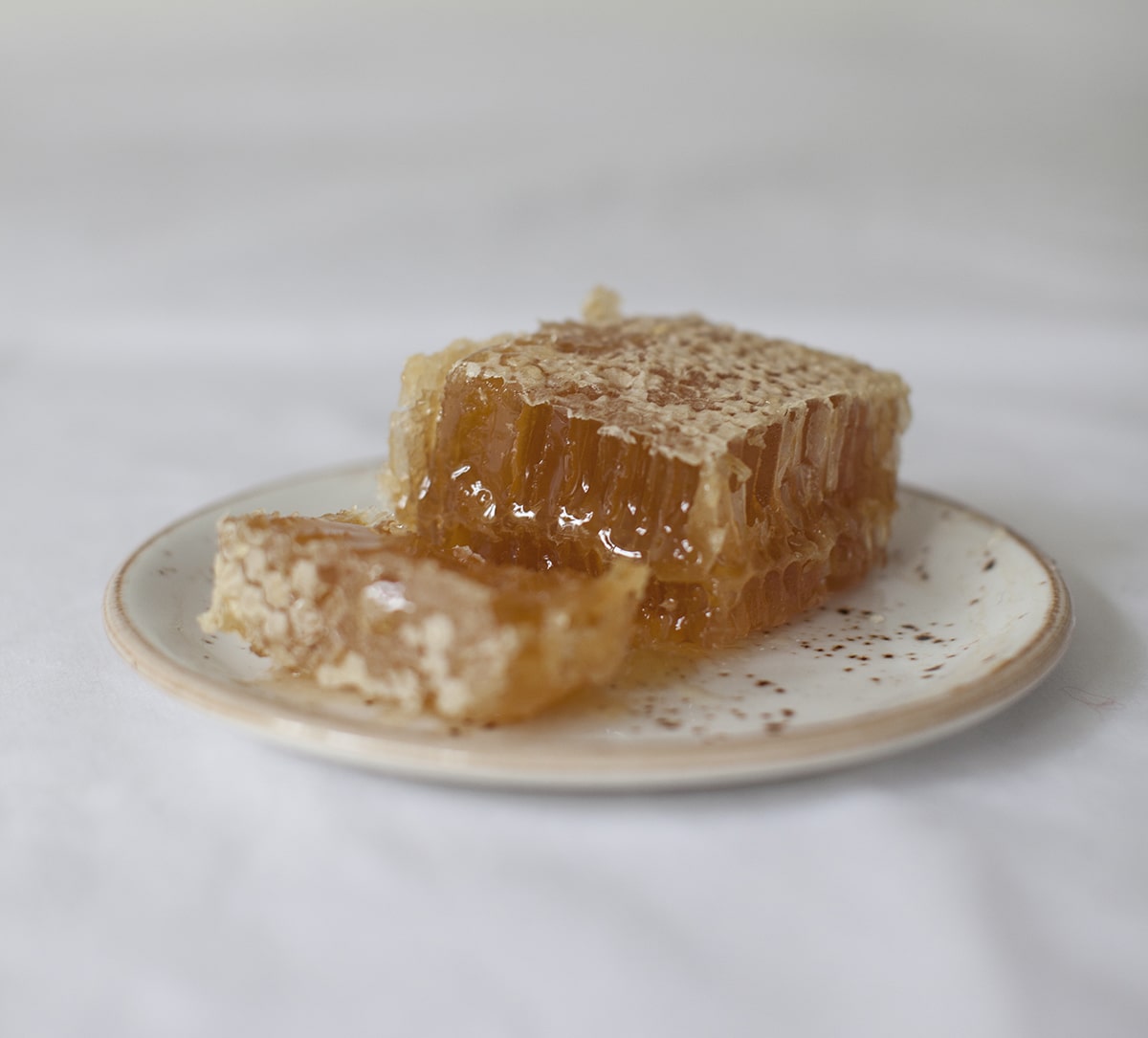In praise of: ‘Tiglio’ Linden Tree Honey
Mark Riddaway sings the praises of a raw Italian honey sold by From Field and Flower
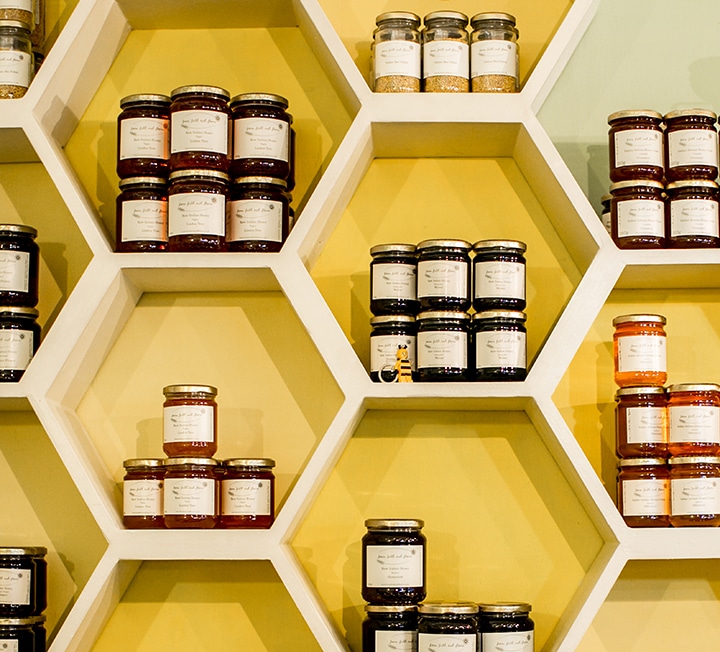

“IT’S SLIGHTLY MEDICINAL, BUT IN A GOOD WAY – LIKE A WELL-MADE NEGRONI – AND THERE AREN’T MANY ILLS IT COULDN’T CURE”
My uncle and aunt were for many years the producers of the finest honey in all of Slough. That may not be the biggest of claims, given that Slough is a place associated less with wild flora and more with David Brent, Brutalism and Betjeman’s bombs, but it’s something. When I was a kid, we were never without a jar, delivered from a hive in the garden of their bungalow. No two batches tasted the same, and no other honey tasted even half as good.
Sadly, the supply shut down after my uncle was stung by a bee – a mundane event for a beekeeper, or so you’d think. While entering full-blown anaphylaxis, he found that he was one of the tiny percentage of adults for whom bee stings are potentially fatal, which goes to show that a) my uncle was both a lucky and skilful beekeeper and b) the universe has a twisted sense of humour. After being discharged from hospital, he decided that being the producer of the finest honey in all of Slough wasn’t accolade enough for lives to be risked in its pursuit.
For me, this has proved problematic – once you’ve tasted the ambrosia of the M4 corridor, where do you turn? The honeys of From Field and Flower, though, touch those heights. This one in particular. It is sourced from Piedmont, northern Italy, where the bees who make it feed from linden trees in the Alpine valleys of Valsesia. Linden trees are known in English as lime trees, and by coincidence (they have absolutely nothing to do with the citrus of the same name) the honey flavoured by their flowers has a distinct hint of limey sourness, offsetting all that glorious sugar. It’s slightly medicinal, but in a good way – like a well-made negroni – and there aren’t many ills it couldn’t cure. Valsesia is no Slough, but its honey is almost as good.
In praise of: ‘Tiglio’ Linden Tree Honey
Mark Riddaway sings the praises of a raw Italian honey sold by From Field and Flower


“OFFAL DOESN’T HAVE TO BE ABOUT EATING EVERYTHING FROM TROTTER TO SQUEAK; IT CAN BE A SCALE AND FIN THING, TOO”
Image: Ed Smith
There’s a certain die-hard meat eater connotation to the word ‘offal’. If someone says they have tried or like pig’s head, calf’s brains, or liver-heavy faggots, they may as well have put on a massive badge stating ‘I am a carnivore’. Yet offal doesn’t have to be about eating everything from trotter to squeak; it can be a scale and fin thing, too.
We’re probably even more guilty of wasting fish bits than we are of other animals. Think about it: despite the fact that a fish’s flesh accounts for just 50 per cent of its mass, it’s generally only the fillets that we eat.
Scandinavians are into cod tongue and throat; in China, fish lips are braised and the collars and heads of fish are prized; I recently ate a stew in Portugal containing braised cod swim bladder, which is similar to an intestine; and, whisper it, I once had cod sperm sac sushi for breakfast at about 5:30 in the morning on the edge of Tokyo’s fish market (a cold beer was necessary both for courage and to wash it down).
More common and easier to recommend than those things are fish livers and roe. Monkfish liver has never been out of fashion in places like Spain, Japan and Iceland, and is now bang on trend in Britain’s restaurants. Fish roes are everywhere: from pastes, dips, patés, and sushi, all the way to caviar.
What are these things you speak of, and how do they taste?
Liver
As with a human, a fish’s liver assists with digestion by producing bile, maintains the correct chemical composition of blood, and stores fats and carbohydrates, so effectively acts as a reserve for energy. Perhaps it’s the latter function that helps to explain why monkfish liver (in particular) is so damn tasty.
Its ‘foie gras of the sea’ label is deserved: it’s rich, buttery and decadent. It also has an amazing saline quality. Most often monkfish liver is cooked quickly in a hot pan, so the edge caramelises and crisps a little, then served with something sweet or tart – sautéed leeks, pickled gooseberries, stewed plums and so on.
There’s a crunch and then a silky, creaminess to monkfish liver and while you can eat too much of it, it is lighter and less cloying than foie gras.
Fish liver can also be used in sauces; melting into and lending a rich saltiness to a pasta dish, for example, without you really knowing it’s there.
How to prepare and cook liver
Monkfish liver is pretty intimidating to look at, but relatively easy to cook and use. Like a mammal’s liver, preparation is largely a case of removing any veins or residual fat from the surface. Some recipes suggest a light brine to firm it a little, and / or soaking it in milk to soften its fishiness.
The Japanese dish ankimo requires liver to be rubbed with salt, soaked in sake, and then steamed. Western recipes tend to slice it into two to three centimetres thick ‘steaks’, and sear on a very hot pan for barely a minute on either side.
Roe
‘Hard’ roe are the egg masses found within the ovaries of fish. Hundreds of individual eggs are produced and held in membraneous sacs, and are usually brightly coloured. They’re relatively seasonal, being much more voluminous around spawning periods. (You’ll occasionally see reference to ‘soft’ roe too which is, in fact, fish semen. This post is mostly about the female version.)
Depending on the fish, the size of their eggs and the consumers involved, fish roe are used in a variety of ways. Some, like the Italians, Spanish and Japanese, cure and dry whole roe sacs, later slicing or grating it as a salty, umami, heavy flavouring, with a certain bitter aftertaste.
Traditionally, we Brits are partial to herring and cod’s roe, again salted and sometimes smoked, but not air dried to harden. The result is a spread with an intense fishy flavour. We remain rank amateurs in comparison to Scandinavians, though, who can’t get enough of the stuff. It’s so popular it comes in squeezable toothpaste tubes and is as universal at breakfast as cereal is on our tables.
You have to look fairly closely at cod and herring roe sacs to see that, actually, they consist of hundreds of little round eggs. The roe of salmon and trout is more obviously separate. Round, reddy-pink balls – which almost look too perfect to be natural – they are often salted or kept in oil, and burst as you bite them, releasing a salty, oily slick. It’s an addictive if acquired taste.
The same is true of caviar. The intensely-flavoured grey-black sturgeon eggs are prestigious, though probably best when simply matched with a little piece of rye bread.
Personally, I find caviar to be overrated. The roe I prize highest is that of the sea urchin. Like bright orange, wobbly tongues, uni, as it is known in Japan, has an ethereal mouthfeel, and melts on the tongue while imparting the best bits of a rockpool in your mouth.
How to prepare and cook roe
Most roe is best when fresh and still raw, or simply salted. The exceptions are generally when the roe is fully cured and air dried or smoked, after which you can simply spread on toast, or grate or shave if it’s drier.
Because roes are universally salty and intense, they add a heady seasoning to toast, rice, pasta or fish dishes, warming through residual heat and imparting a muted but strong flavour to the rest of the dish.
I was hoping to get my hands on some monkfish liver for this post, but each of Borough’s fishmongers confirmed the same thing: it’s a difficult treat to get hold of! Which is not to say you won’t see it at the Market, just that it’s not often in stock. So keep your eyes out in case any of the monkfish tails came with an added bonus and snap it up if it’s there.
Still, Shellseekers Fish & Game had plenty of smoked cod’s roe, and I had a few people coming over for drinks – so whipped cod’s roe (i.e. taramasalata) was the order of the day.
This is something that’s been de rigeur on London menus over the last few years, mostly via chefs who have either worked with or are clearly influenced by the Henderson / St John way of cooking. Interestingly, though, there’s no recipe for whipped cod’s roe in his books, which made testing out the best way of making it and then providing a recipe here even more vital!
Most recipes I read suggested adding oil to the roe and using a machine to blend it into an emulsion, like a mayonnaise. I wasn’t convinced by the results of that method, though, and also felt it unnecessary – roe is so soft, whipping it up by hand isn’t too much of a chore. Two other variants I tried included combining with soaked stale bread, which is possibly more authentic Greek taramasalata, and with creme fraiche, which requires less planning.
I preferred the latter approach – partly because of the ease of buying a pot of creme fraiche over ensuring there are stale white bread crumbs at home, but mostly because I think the sharp, cooling tang of creme fraiche is particularly good paired with the smoky, salty roe.
Read Ed’s recipe for whipped smoked cod’s roe.
In praise of: ‘Tiglio’ Linden Tree Honey
Mark Riddaway sings the praises of a raw Italian honey sold by From Field and Flower


“IT’S THE SORT OF CHEESE THAT SERIOUS CHEESE LOVERS SEEK OUT WHEN THEY WANT SOMETHING SURPRISING AND NEW”
The place: an Alpine cheese parlour, high above the Maurienne Valley in the Vanoise National Park. Inside, the eerie, whimsical tinkle of cow bells sounds the end of milking, and the start – or rather, resumption – of making cheese. Catherine Richard doesn’t falter. A milkmaid at the age of six and a cheesemaker by 15, one imagines her veins are as blue as the unique mould that suffuses the bleu de Termignon, so easily does its making run through them. Now in her sixties, she is one of a mere handful of producers left making this “totally fascinating, totally awesome” cheese.
“It’s really unusual,” Max at Mons Cheesemongers continues. “She is working in a 700-year-old chalet – just in the summer months, when there’s no snow, because when the snow comes, you can’t reach it.” As soon as the snow melts, she and her small herd of 15 or 16 cows make the journey up Maurienne to the alpage – rich in luscious grasses and wild herbs: chives, white clover, daisies and other flora which, when the first, sweet wheels of the season are cut open, you can quite literally taste.
The cheese is made in stages, the morning milk strained and added to the previous evening’s yield before being renneted, heated and kept warm with a reflective mountain rescue blanket – yes, really – to create curds that, once drained, can be added to curds which have been acidifying in whey since they were made two days before.
“This gives the finished cheese a distinctively tart, acidic taste,” says Max. The whey in which the curds were sitting is topped up, and the curds replenished with fresh ones. Remarkably, in an age of blind, sweeping sterility, the whey in this bucket is never entirely replaced. What’s more, the equipment is all wooden at this stage in the process, helping to harbour the bright, indigenous mould which pervades this cheese in a mysterious, delicious way.
“Bleu de Termignon is a natural blue: the cheese is not pierced, or seeded with penicillin in the way most blues are.” Silently, stealthily, the mould creeps from the outside rind through. By pressing the curds by hand into the cloth-lined wooden cylinders, the mould can wend its way easily through their loose, rubbery texture as the cheese matures, left in the cellar, sometimes over winter, to age and fester under a thick layer of snow and ice while the cows return to the valley, to eat the hay and dried flowers Caroline spent the hours she wasn’t milking or making cheese assidiously preparing.
Only the cows are allowed the flora that grow in the Vanoise National Park; mere mortals can’t touch it. By the time the bleu de Termignon arrives at the Mons Cheesemongers maturing rooms in Bermondsey, its uniqueness has been set in a thick, grey, red dusted-rind, if not in actual stone.
“You can still see the red mould on the rind when we receive the cheese,” Max marvels. It’s the same mould which blankets the stone walls of Caroline’s chalet, and the mountainous crags overlooking it. Quite often, they as cheesemongers like to “age it up” by cutting the wheel in half and keeping it at 15 degrees for a few months, to allow the blue mould inside the cheese to diffuse a bit further through.
The taste is unlike any other: Max reaches for mushrooms and woody herbs, but it varies: “Last year they were more aniseedy – more fennel-y, really.” His colleague likens the texture to that of a Lancashire, but again insists on its uniqueness. “It’s the sort of cheese that serious cheese lovers seek out when they want something surprising and new.” It’s a cheese for cheesemongers, she continues: “The people who spend all day tasting and smelling cheese? This is the one that’s sufficiently amazing and interesting and fascinating for them to happily go home at the end of the day and to sit and eat more cheese.” Recommendations don’t come much higher than that.
Cut & dried: Italian salumi (part two)
In the second of two posts on Italian salumi, Ed Smith takes a look at some lesser-known regions and varieties
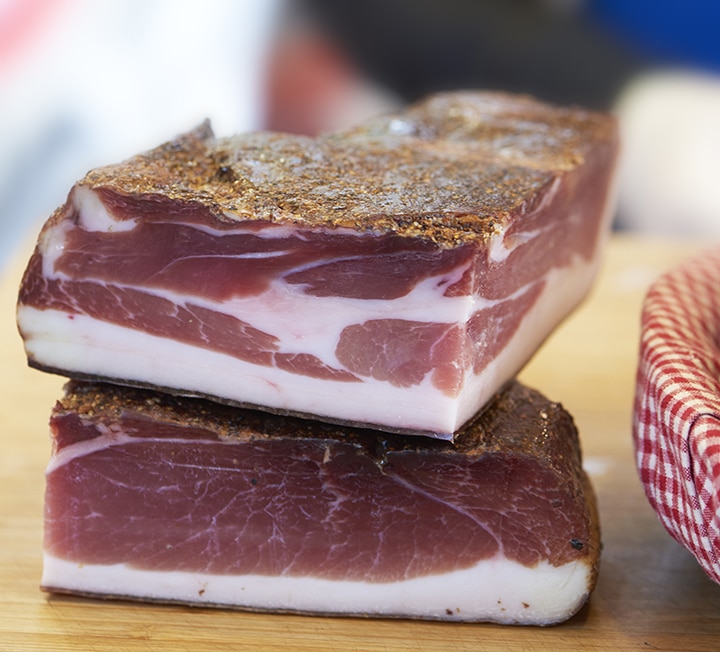

“THE FAT IN NDUJA COMES BOTH FROM THE BACK OF HEAVY PIGS AND THE TRIM OF BELLIES AND SHOULDERS – AND IT’S DELICIOUS”
If you wanted to put together a varied Italian salumi platter, you could fill it, very, very easily, with crowd-pleasers from Emilia-Romagna, Tuscany and Lombardy: a coppa, some prosciutto or culatello, a couple of salami – a Toscana and a Milano, perhaps – and some mortadella. It would be a perfectly good meat board. World class, in fact (there’s more on those meats in last month’s post). Yet it wouldn’t represent the full scope of Italian salumi in either geography or style.
Two key regions of salume production represented at the Market are South Tyrol, or Alto Adige – a mountainous province in northeast Italy, bordered by Austria and Switzerland – and Calabria, which is all the way down at the opposite end of the country, in the southwestern ‘toe’. The styles and flavours of products in these regions are completely different to each other, and indeed to the regions explored last time. In part, this can be explained by their terroir and the other foods of each area.
Calabrian salumi
Nduja, probably the best-known type of Calabrian salume, is effectively a paste that consists of around 50 per cent pork fat and 50 per cent Calabrian chilli. The fat will have come both from the back of heavy pigs, but also the trim of bellies and shoulders (so there’ll be a few scrapings of meat in there), and, wow, it’s delicious.
De Calabria is the place to head for nduja. Theirs is both truly authentic and of a fantastic quality. You’ll see the fresh chilli is unevenly chopped (a sure sign of an artisan product!) and has infused the product with a flame-red colour. Spread it on biscuits or bread and drizzle with honey. Or use it in your cooking: under the skin of a roast chicken, stirred through a pasta sauce, in the middle of arancini or croquettes, or fry your eggs in a good chunk of it.
Do talk with the guys at De Calabria, though, as you’ll find they’ve a few other bits of salumi to offer – their nduja producer is also the farmer of the pigs, so makes use of all of the beast. There’s a chilli-spiced capocollo, chilli-spiced pancetta, chilli-spiced salame (soppressata), and a totally-porky, nose-to-tail pressed head terrine known in Calabria as gelatina. All fantastic.
Alpine salumi
If fresh, locally-grown chilli defines the cured meats produced in Calabria, then the ingredient that arguably defines and certainly makes meats from the South Tyrol stand out is smoke.
The reason for this, I’d posit, is that as we move north and uphill, the environment was (is) no longer suited to air-drying meats. Once up in the Dolomites (and then into Austria, Germany and into Scandinavia), the Romans and other early curers couldn’t simply leave a ham or neck muscle in a cave and return seven months later to collect the basis of their sublime meat platter, as they might have done in Tuscany. They found, however, that if you cold-smoke the meat once salted, then the bacteria that makes meat inhospitable for eating and storing could still be defeated. Smoke is now a key flavour of Alpine meats. Originally it would have been a necessity, too.
Next time you’re at the Market, visit Alpine Deli and have a chat with owner Thea, as you taste and buy her super products. The standout meat is speck Alto Adige. In one sense this is the same as prosciutto, but only in that it’s a ham made from the back leg of a pig. It’s also very different to those meats from Parma and San Danielle we discussed last time. In South Tyrol, the ham is de-boned before it is cured and dried. It’s also smoked over oak (again, before drying). Actually, there’s another similarity with the prosciuttos: speck is delicious sliced very thinly and savoured on a meat board. Thea tells me she also enjoys cooking with it – cubed in pasta sauces, or as a component of Alpine bread dumplings.
When you speak to Thea, you’ll notice that her Italian accent is, well, German. Most Italians from this province speak German rather than Italian and in many senses, we should consider the cuisine of that area as ‘Alpine’ (rather than Italian or Austrian). Other cured meat products that are distinct to the wider region are her ‘chimney sausages’ – small salamis that, originally, would’ve been smoked somewhere high up the chimneys of Alpine smallholders – and her venison bresaola, which of course reflects the fact that the mountainous terrain of the area is better suited to roaming deer than cattle farms.
What it takes: making traditional cider
Barry Topp of New Forest Cider, whose ciders are sold at The Cider House, on the intricacies behind the apparently simple task of fermenting apple juice
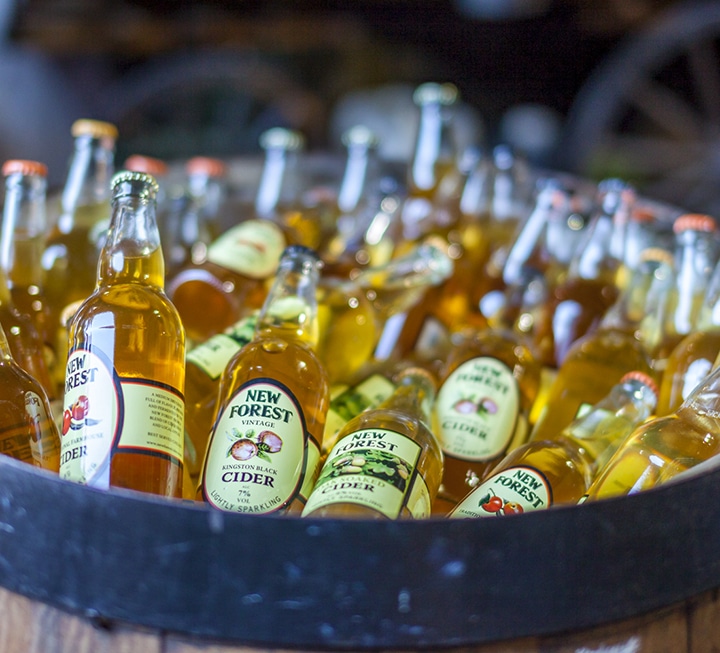

“THE OLD LORE WAS THAT CIDER PRESSED IN AUTUMN SHOULDN’T BE DRUNK UNTIL THE CUCKOO SINGS, WHICH IS AROUND APRIL OR MAY”
Interview: Viel Richardson
What is the basic process for making a West Country cider?
We pick the fruit in the autumn when the weather is cooling. After blending the apples, we press them and store the juice in large vats for the primary fermentation. This process continues until some point in January. When the weather is right, we then move the juice – minus the sediment – into fresh vats, adding a bit of sugar. We don’t filter the fermented juice, so there’s still a little bit of yeast to feed on the sugar. We then seal the vat tight and leave it. The old lore was that cider pressed in autumn shouldn’t be drunk until the cuckoo sings, which is around April or May, when the weather really starts to warm up and the yeast in the cider starts feeding more actively, giving the finished drink a little natural sparkle.
What is your approach to cider making?
My West Country connections mean I have always gone for a very traditional type of cider, made with bittersweet and bittersharp apples. I was taught to make cider by a wonderful woman called Jean Noelle, over in Herefordshire. One of her mantras was: “You have to be able to look your customers in the eye and say that there were no ‘brook apples’ in my cider.” That means there is no water bulking out the volume.
How many different types of cider do you make?
We make sell three distinct types, each with its own specific qualities: the traditional West Country ciders, a French-style cidre bouche, and a champagne cider. Each one starts with us pressing apples, but then follows a very different process to get to the final result. You can buy them all at The Cider House.
Do you use more than one variety of apple in each cider?
Most of the time. Modern drinkers often find traditional cider a bit intense, so we try to create a blend that will have the feel of a very traditional cider but which has been tweaked a little for the modern palate. For example, I sometimes add culinary apples to the cider blend to bring some lightness to the drink. We do make one single varietal cider using the Kingston Black apple. It’s a bittersharp apple which, because the skin is high in tannins, is able to create a balanced cider all on its own. Compared to the other varieties we make, it produces a slightly stronger drink. It is a ‘vintage’ cider – a name reserved for single varietal ciders.
How do you create a blend?
Creating a blend of juices that will taste great after fermentation is a mixture of art, science and experience. One blend we have uses Black Dabinett, Darlington Mill, Michelin and possibly a bit of Bramley to add some acidity. Others we use include Tremlett’s Bitter, Port Royal and Stoke Red. You either mix up the whole apples and then juice them all together, or else juice the apples separately and blend the fermented juice. I favour blending the whole apples – for me, it gives you something extra. Thankfully, I have the size of machinery you need to do so. Many smaller producers have no choice but to press the individual apples.
Are great apples the key?
Very much so. To get the mix we want for each drink, we buy apples in as well as growing our own. We source some from an old orchard in West Pennard in Somerset and others from a farm in Melplash, west Dorset. We have to collect them in small lorries we call six-wheelers, as you can’t get large lorries down the tiny lanes.
So, making cider is a real craft.
The basics are very simple. But it’s a case of getting to really understand each stage, the weather, the chemistry, the apples and how you blend them to create the taste profile you want to achieve.
In praise of: ‘Tiglio’ Linden Tree Honey
Mark Riddaway sings the praises of a raw Italian honey sold by From Field and Flower


“THE AROMATICS ON THE NOSE, THE TONGUE AND THE PALATE ARE NUANCED, SOPHISTICATED AND EVER-CHANGING”
Image: Ed Smith
The throwaway line “season with salt and pepper” is one of the greatest crimes of modern recipe writing.
While pepper, like salt, brings flavour to a meal, that flavour is its own, not something in the food already that’s been emboldened and emphasised, in the way it might be by the addition of sodium chloride. In fact, a grating of pepper is akin to adding a dusting of paprika, or a sprinkle of crushed cumin seeds – it is very definitely a spice, and an ancient one at that.
Pepper has a fruity history and a defined, rather than generic, purpose. The aromatics of peppercorns received by the nose, the tongue and the palate are nuanced, sophisticated, and ever-changing. Our senses are stimulated by them. Certain varieties even numb and tingle.
To avoid confusion, I should note at the outset that I will use ‘pepper’ and ‘peppercorn’ interchangeably in this piece. Of course, in both instances I am referring to the spice, not the fruit of the capsicum plant (bell peppers, romano peppers etc).
There are many varieties of peppercorns (and some imposters too). Spice Mountain stocks nearly 20 of them. We can’t cover them all in this piece, so instead I’ll provide a potted history, before highlighting a few of the key varieties.
Peppercorns are the fruit of a flowering vine from the plant family piperaceae. Though native to India (particularly, the south), peppercorns grow across Asia and the Indian sub-continent and have done almost since records began. Vietnam is a huge producer. The main one, in fact. Though Indonesia, Nepal, China, Malaysia and of course India are major pepper players too.
We take pepper for granted, but it’s usually cited as the most or second most traded spice in the world (depending whether you count chilli as a spice), and until modern times was also one of the most valuable.
Black peppercorns
The most common type is the black peppercorn, though there are a number of varieties.
Black peppercorns are the blanched and then dried unripe ‘drupes’ of the pepper plant. They grow in a long bunch and are picked off once dried and blackened.
Their fruity, hot aroma is evident when crushed or ground, and they don’t require the kind of toasting that other spices do to refine and release their oils. Typical tasting notes include grassiness, a little citrus, and musty, dry heat.
It’s best to buy peppercorns whole and grind them only at the point of use, as it loses its aroma quickly. For similar reasons, it’s best to add pepper at the end of the cooking process. In fact, these tips relate to all colours of peppercorns.
As you can see from walking round Spice Mountain, we are spoilt for choice of black peppercorn. Celebrated varieties include the Tellicherry pepper, cubeb pepper, Sarawak pepper and Vietnamese peppercorns.
The Tellicherry pepper is regularly cited as the very best of the peppercorns. They’re grown on the Malabar coast in Kerala, southern India, and are notable for their size and pungency. Tellicherry peppercorns are over-ripened on the vine, so are almost bloated before being picked. They’re bright, sweet and fruity, and have a hint of pine freshness.
Cubeb pepper is from Indonesia. It’s quite easy to pick out from a normal black peppercorn because the stalk of the cubeb remains like a tail. Spice Mountain suggests using cubeb pepper in north African cooking, and I can see exactly why; there’s a touch of allspice and citrus note to it, which would go really well with food from that continent.
Sarawak pepper is from Malaysia. It’s bold and woody and warm and cracking over rich meats or in coconut-based curries.
Vietnamese peppercorns are probably the black peppercorns you have in your supermarket stocked grinder. Perfectly good for everyday cooking.
Green peppercorns
Though you may be disappointed to learn that pink peppercorns are a complete imposter and not a peppercorn at all, green ones are. In fact, these are the fresh ‘drupes’ of the pepper plant, which would become black were they to be blanched and dried. They’re technically unripe, and are often salted or brined to preserve them. Green peppercorns are a staple of Thai and Vietnamese cooking, though have also made themselves known in French cuisine. Delia Smith loves them too.
White peppercorns
White peppercorns are the seeds of the pepper fruits. They’re from the same plant as black and green peppercorns, but to obtain the seeds, the fully ripe and now red fruits are soaked in water until the flesh starts to decompose, allowing the seed to be revealed following a little rubbing. This is then dried out for use. White pepper has a very different flavour to black. There’s a musty and indeed mustardy-ness to it. Many Escoffier-style, French, cream-based or puréed potato dish relies on it to bring warmth without flakes of black spice. It’s also important in Chinese and Thai cooking.
Long pepper
Indonesian or Java long pepper is of the piperaceae family, but looks very different to all the other peppercorns. Rather than growing in a cluster of little berries, a long pepper is one, well, long pepper. Usually about two to three centimetres, it’s a tightly-packed fruit which is picked and dried in the same way as black peppercorns, and has similar hot and citrus characteristics. But it’s also a little bit like cassia bark, with a hint of eucalyptus. It’s really something worth seeking out, and then using as you would other peppers – ground over red meats or into rich stews and curries.
Sichuan peppercorns
Just to add one last element of confusion, Sichuan peppercorns are not technically peppercorns as they’re the fruit of a different family of plants in the citrus (rutaceae) family. Which explains the definite lemony-lime flavour to them, if not the numbing effect they have on the tongue, or their potent heat. There are a number of varieties, though red hulled ones, whole green ones and the Nepalese brown ‘peppercorns’ are particularly common. Be warned: once you’ve become accustomed to the wizardry of Sichuan peppercorns, it’s hard to turn back.
Culinary uses
Having written at the top that pepper is not a mere seasoning, I would like to backtrack a little and note that a scattering does, on many occasions, enhance a dish or ingredient.
Certain roots and tubers, for example, love a heavy grind of black pepper – in particular swede, turnips, celeriac, carrots and potatoes when boiled, mashed or gratinated. Ditto brassicas like cabbage and kale. Mushrooms seem to love pepper too, not least once they’ve been fried in butter. Beef is partial to a generous coating as well; I’m thinking on top of the charred crust of a just-cooked steak, into the rich stock of a beef bourguignon, or over slices of a roast rib joint. To my mind oily fish like salmon and trout go particularly well with the spice. Also, anything relating to melting cheese and white sauces benefits from the must of peppercorns; classically, it should probably be a pinch of white peppercorn, but black pepper is fine. And no pork sausage is a good pork sausage without loads of black pepper in the mix.
There are also a wide range of dishes that rely on peppercorns as a vital ingredient.
Prince of them all is cacio e pepe, the Roman dish which translates directly as ‘cheese and pepper’, because aside from pasta the only ingredients are (or should be) pecorino, pepper and a dash of the water in which the pasta boils. It’s a brilliant example of how commanding and flavoursome pepper can be.
Unsurprisingly given where peppercorns are generally grown, a number of Asian dishes make the most of them as a flavour. You will find multiple versions of black pepper chicken and tofu dishes across the various regions of mainland China. Similarly in India, chicken and paneer that have been heavily coated in black pepper are mainstays of tandoor and dry-style curries.
There’s barely a dish in Sichuanese cuisine which isn’t powered by the citrus tingle of Sichuan peppercorns. Both red and green peppercorns are essential in good hotpot restaurants (slowly infusing their heat and scent into the broth and indeed your clothes), and classic dishes like mapo tofu, kung pao chicken and dry fried green beans are all the better for the spice.
And it may surprise many to know that black pepper is a particularly good match with certain acidic fruits, and therefore it’s a spice you might encounter at the end of a meal. For example, there are multiple recipes out there that involve freshly grinding black peppercorns over strawberries, or pieces of pineapple and mango. Many more where the spice is added to a sorbet or ice cream of those same fruits. It’s a super match, again highlighting peppers as a spice with a unique and appealing flavour.
See Ed’s recipe for onglet with Tellicherry & long pepper sauce.
In praise of: ‘Tiglio’ Linden Tree Honey
Mark Riddaway sings the praises of a raw Italian honey sold by From Field and Flower


“IT IS THE HIGH LEVELS OF PROTEIN, FAT AND WATER WITHIN EGGS THAT MAKE THEM SO USEFUL IN THE KITCHEN”
Eggs were once a springtime delicacy, as widely anticipated by British cooks as the first strawberries of the summer. Birds, if left to their own devices, only lay eggs when there is sufficient daylight, be they domesticated ducks or wild gulls. Today, most farmers encourage hens, ducks and quails to lay throughout the year by lighting their barns in the dark winter months.
Until the mid-20th century, spring was marked by the arrival of myriad different types of eggs, ranging from rich-tasting boiled plovers’ eggs (now illegal to collect) served nestled in a bed of moss, to pretty fawn-coloured guinea fowl eggs coddled in a hot-water bath as a breakfast treat. Such seasonality ensured that everyone appreciated the joys of a fresh egg and much care was taken in the summer to preserve hens’ eggs for the winter months by cleaning their shells and painting them in gum arabic.
As ES Dallas wrote in 1877 in his fascinating Kettner’s Book of the Table, there is “nothing in the way of food more simple than an egg, and nothing so quick and marvelous in its manifold uses and transformations. There are said to be about 600 ways of serving an egg, over and above the uses to which it may be put in creams, custards, liaisons, sauces, and cakes.”
Today, the number of egg-dependent recipes available to British cooks must far exceed his 600 ways, given our access to ideas from around the world. No Victorian cook would have dreamed of serving her diners a delicate Italian stracciatella (egg-drop) soup, let alone a hearty dish of Moroccan fried eggs with tomatoes and cumin.
Modern cooks are far more likely to make Ottolenghi’s Turkish baked eggs with yoghurt or Sabrina Ghayour’s Persian herb frittata, than an old-fashioned butter-rich egg sauce or poached eggs with gravy, served on a crouton with a rich, clear veal gravy. In Modern Cookery for Private Families (1845), Eliza Acton suggested that a young swan’s egg could be served this way – on a large crouton, or preferably on some spinach, “and sauced with highly flavoured gravy, or with tomata-sauce well-seasoned with eshalots”.
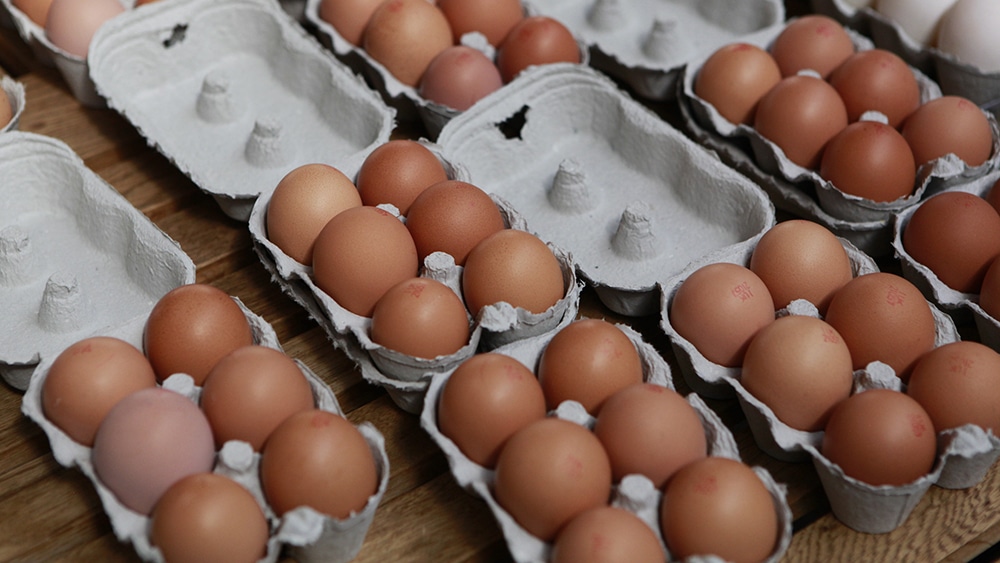
All these recipes rely on the unique properties of eggs. A hen’s egg white contains more than 10 per cent protein by weight, while the yolk contains nearly 20 per cent protein, including the emulsifying protein lecithin, as well as a high quantity of fat. Both white and yolk carry minerals such as iodine, phosphorus and selium, and vitamins A, D, B12 and folate. In other words, they’re very nutritious as well as delicious.
It is the high levels of protein, fat and water within eggs that make them so useful in the kitchen. The protein will set when gently exposed to heat, which allows the creation of all manner of wobbly custards, from coffee crème caramel to leek and bacon quiche. It also enables otherwise crumbly mixtures to be bound together once cooked, such as a buttery bread stuffing or a pork and spinach terrine.
Best of all, it allows cooks to create lightness in their dishes by beating or whisking air into the eggs or egg whites, which expands and sets when exposed to heat, for example in a cheese soufflé, fluffy lemon cupcake or fragile meringue.
The egg yolk’s fat ensures that the soufflé or cake has a moist, rich texture. In contrast, egg whites produce drier-textured dishes even when the meringue is poached, such as in floating islands.
The egg yolk’s fat also imbues sauces with an unctuous texture when their protein thickens a liquid, such as a vanilla custard or a rhubarb curd. It’s the protein lecithin within egg yolks that enables them to hold both water and fat to create a stable emulsion, regardless of whether it is submitted to heat, such as with a béarnaise sauce where butter is added, or kept cold in mayonnaise, for example.
The ability of egg whites to form an airtight coating around each bubble of air when whisked can also be preserved by setting with gelatine or chocolate. This is particularly useful for custard-based ice cream makers such as myself, who can use up all their excess whites by making orange flower water marshmallows and chocolate pots.
All of which makes me want to make some more egg-based dishes – anyone for saffron bread and butter pudding?
Bantam eggs
Half the size of chicken eggs, these are normally found through friends and family. Perfect for breakfast.
Duck eggs
These have a slightly richer eggy flavour than hen’s eggs. They are delicious scrambled, or used in classic unctuous egg dishes such as omelettes or custards. The egg whites form smaller bubbles when whisked, which gives meringues and whisked sponges a different texture. Available all year round.
Goose eggs
Goose eggs are traditionally sold from 14th February until the beginning of May, as domesticated geese very sensibly insist on only laying their eggs as the weather turns warm in the spring. A single egg can weigh anything between 180-200g. The yolks have a high fat content.
Gull eggs
Gull eggs are only permitted to be collected under license and are sold for a brief period at the end of April. As a result, they are considered a delicacy. They have an intense eggy taste and are usually served simply, for example, boiled with celery salt.
Hen eggs
Available all year round in a wide variety of shapes and colours, depending on the breed of hen. An average hen’s egg will weigh around 50g, although their size and weight can vary considerably. The colour of the yolk is dependent on the hen’s diet – free-range foraging in grass produces a rich yellow yolk.
Pheasant eggs
Due to their strong flavour, pheasant eggs are best served in salads, where their taste can be balanced with other ingredients. They’re in season from April until June but like guinea fowl and bantam eggs, are often hard to find. Oddly, they have proportionally more yolk to egg than a hen’s egg.
Quail eggs
Quails’ eggs have such pretty shells, you feel they ought to be made of chocolate and praline. Happily, they’re available throughout the year and, weighing between 15-20g, they’re perfect for canapés and salads.
Discover more
In praise of: ‘Tiglio’ Linden Tree Honey
Mark Riddaway sings the praises of a raw Italian honey sold by From Field and Flower


“AGROFORESTRY TAKES CHANGES IN FARMING OVER THE PAST CENTURY AND COMBINES THEM WITH THE BENEFITS OF PERMACULTURE”
Words: Clare Finney
“What does it mean to call your product ethical?” muses Charles Tebbutt. “What does it mean to make that claim to sustainability?” As the inaugural subject of this new column, the founder and director of Food & Forest has thought long and hard about this question, and how his business of supplying nuts produced by a network of suppliers, all of whom use a method known as ‘agroforestry’, fits in.
“For me, there are two distinctive canons in this area. On the one hand you have Slow Food, helping to revitalise small scale producers. There is concern for the dignity and integrity of the rural community and environment, and support for an alternative to mechanised production.” On the other hand, he continues, you’ve a “utilitarian framework”: how, with exponential growth in global population, do we find production methods that are capable of feeding the world?
Agroforestry, Charles explains, combines the best aspects of both these canons. “By comparing how much an acre of land produces under various approaches to management, Cranfield University concluded that one hectare of agroforestry yields as much as 0.8 hectares of arable crops and 0.6 hectares of forestry. You’re getting 1.4 hectares worth of production from one hectare,” he smiles. “You’ve nailed the utilitarian argument.”
So how does agroforestry – the use of trees in arable farming – contribute toward the sustainability of rural areas? To answer this, it helps to imagine the farms in question: long avenues of grain, each around 30m wide, lined by flowering and fruiting trees. The aesthetic merits of mixing fields of otherwise monotonous arable crops with nut and fruit trees are obvious, but what is more significant is the contribution these trees make toward the fertility and yield of the farm, and its impact on the environment.

“In East Anglia, where there are few hedges, farmers see it as normal for the topsoil to blow away periodically – but the trunks help decrease wind speed,” Charles points out. Meanwhile, the deep roots of the trees further reduce soil erosion, thereby retaining its stock of nutrients as well as adding to it via leaf litter come autumn.
“Stephen Briggs, one of the leading proponents of agroforestry, talks a lot about the subsoil that cannot normally be accessed by arable crops,” he continues. “Because the tree roots go deeper, they suck up the phosphorous from the subsoil, which is recycled when the leaves fall. This means the nutrients reach the topsoil, without the need for excess fertiliser.” It’s good for the environment – less fertiliser is required so there’s less run off and river pollution – “but it is also conducive to large yields.”
The benefits don’t stop there. Because the ground crops utilise water, nitrogen and sunlight earlier in the year than the trees, there is far less nitrate loss overall. “You harvest that crop, and when you have harvested that, the tree crop starts coming. The time frames are complementary.” Any nitrogen that isn’t utilised by crops is subsequently captured by the roots of the trees.
As keen campers among you will have found, the ground temperature in woodland is invariably higher than in an open field. “There is evidence to suggest the presence of tree roots means the soil warms up sooner in spring and stays hotter for later in autumn. The roots trap the heat and insulate the soil,” says Charles – making life easier for crops as well as sleeping campers. In short, says Charles, “agroforestry takes the best developments in farming over the past century – the yields, the logistical efficiency and the use of technology – and combines them with the environmental benefits of permaculture.” In this way, it takes the ethical imperative to care for the environment and combines it with the ethical imperative to feed our growing population. This is ethics, every which way.
In praise of: ‘Tiglio’ Linden Tree Honey
Mark Riddaway sings the praises of a raw Italian honey sold by From Field and Flower


“BAKING IT IN A SALT CRUST IS AN OPTION, BUT POACHING IT GENTLY IN THE LAST FEW MOMENTS OF A STEW IS MUCH LESS HASSLE”
Image: Ed Smith
The gurnard may not be the absolute weirdest-looking creature of the sea, but neither is it the prettiest. You’ll often see it described as “pre-historic looking”, “distinctive” and “downright ugly” – and looking at the large-headed, wide-mouthed, big-eyed, jagged-finned, pink-skinned examples at Furness Fish Markets, it’s hard to disagree. Which doesn’t exactly make gurnard attractive to buy, cook and eat.
In his seminal book English Seafood Cookery, however, Rick Stein pointed out that gurnard “is an undervalued fish, mostly going as bait for lobster pots” and that it is excellent in stews like a bouillabaisse, and also when filleted and cooked simply. “Any recipe for filleted sole, turbot, brill or john dory would suit gurnard”. Did we actually heed Rick, though, or were we just reading and watching because his dog Chalky was so cute?
I worry it was the latter – it’s now nearly 30 years since that book was published, and I still don’t think gurnard is cooked enough. Stephen Harris, chef proprietor at the acclaimed Sportsman restaurant near Whitstable, wrote about gurnard for the Telegraph, not just bemoaning the fish’s bad reputation in general, but also noting his own reluctance to cook it (“I was never quite convinced”). The fact no one bought the gurnard dishes cooked at the Sportsman was nearly the final nail in the coffin for Harris (“even my brother couldn’t sell it”). It was proving even more wasteful to buy gurnard for the restaurant than it would be to let the fisherman send it to the lobster pots.
There is, thankfully, a happy ending. Harris found that by cooking gurnard on the bone it didn’t dry out, as it can do when filleted. He now salt-bakes the fish, serving it broken into large flakes on top of a bouillabaisse style sauce – and customers can’t get enough. Having eaten that dish at the Sportsman, I can vouch for its quality and, more pertinently, his assessment that the fish tastes “briny and sweet” and that “and the texture was enhanced by a slight stickiness that came from the gelatine in the fish bones”. Accordingly, I highly recommend gurnard as an easy to cook and great tasting, however odd it looks. Baking it in a salt crust (as Harris does) is absolutely an option. But simply poaching it gently in the last few moments of a stew is a pretty good, hassle-free alternative.
You will often see gurnard paired with peperonata, that sticky, intense, long reduced tangle of bell peppers, onions and tomato. A few weeks ago I cooked masses of peppers and onions with cumin and oregano, adding extra water and saffron once it was cooked so that it began to resemble a stew. I then added handfuls of sweet cherry tomatoes and let four whole gurnard nestle in amongst it all as if they were having a bath.
After some gentle simmering, just as it became clear they had poached perfectly, I lifted them out, turning the heat up for the broth to reduce a little while carefully pilling the fish into fillets. As Harris said, the resulting flesh was firm, sticky and sweet tasting, and worked brilliantly laid over the peperonata stew with a good hunk of warm bread, a glug of peppery olive oil and a scattering of parsley. Not such an ugly critter after all.
See Ed’s recipe for gurnard peperonata stew.
In praise of: ‘Tiglio’ Linden Tree Honey
Mark Riddaway sings the praises of a raw Italian honey sold by From Field and Flower


“COLLAR BACON’S PLEASING RATIO OF MEATY GOODNESS TO FATTY CREAMINESS MEANS IT CRISPS UP LIKE AN ABSOLUTE DREAM”
Tomahawk
A tomahawk cut can be taken from either a cow or a pig: beef tomahawk is usually a ribeye steak attached to the short rib (pictured above); ‘tomapork’, as it’s affectionately known at Northfield Farm, is a pork chop with the belly still attached. Both are great for sharing; the latter is exceptionally good on the barbecue, sealed till crisp and golden then cooked through for 20 minutes.
Collar bacon
While a highly traditional feature on the butcher’s counter, you won’t find collar bacon among the generic back and streaky in supermarkets. Taken from the fleshy part that runs from the shoulder to the neck of the pig, this is the closest bacon comes to being marbled. Its pleasing ratio of meaty goodness to fatty creaminess means it’s intensely flavoursome and crisps up like an absolute dream.
Scrag end
The traditional basis for scouse – the meat stew so popular on Merseyside it became a slang term for Liverpudlians – scrag end is taken from the lamb’s neck, but isn’t the same as the more familiar fleshy, fillet-like neck cut. This is a hard-working muscle, sold on the bone. It requires some attention when cooking, which should be done over several hours, but a little patience will reward both palate and pocket.
Onglet
Better-known in the United States as ‘hanger’ steak, onglet is found hanging (hence the American moniker) from the diaphragm. Don’t let the fact this dark red muscle has very little fat – and that it’s quite, well, fibrous – scare you out of cooking it: flash frying for a couple of minutes each side is all it takes. Serve with something punchy and strong-flavoured – it can certainly hold its own.
Venison barnsley chop
The barnsley chop is most closely associated with lamb, but it also makes for a tasty cut of venison. At Shellseekers Fish & Game, you’ll find it in the form of deep red wild sika meat, shot by owner Darren himself and butchered on site. Cook it in much the same way you would lamb, but be aware of its relative leanness. For maximum tenderness, ensure you allow plenty of time for the meat to rest before serving.
